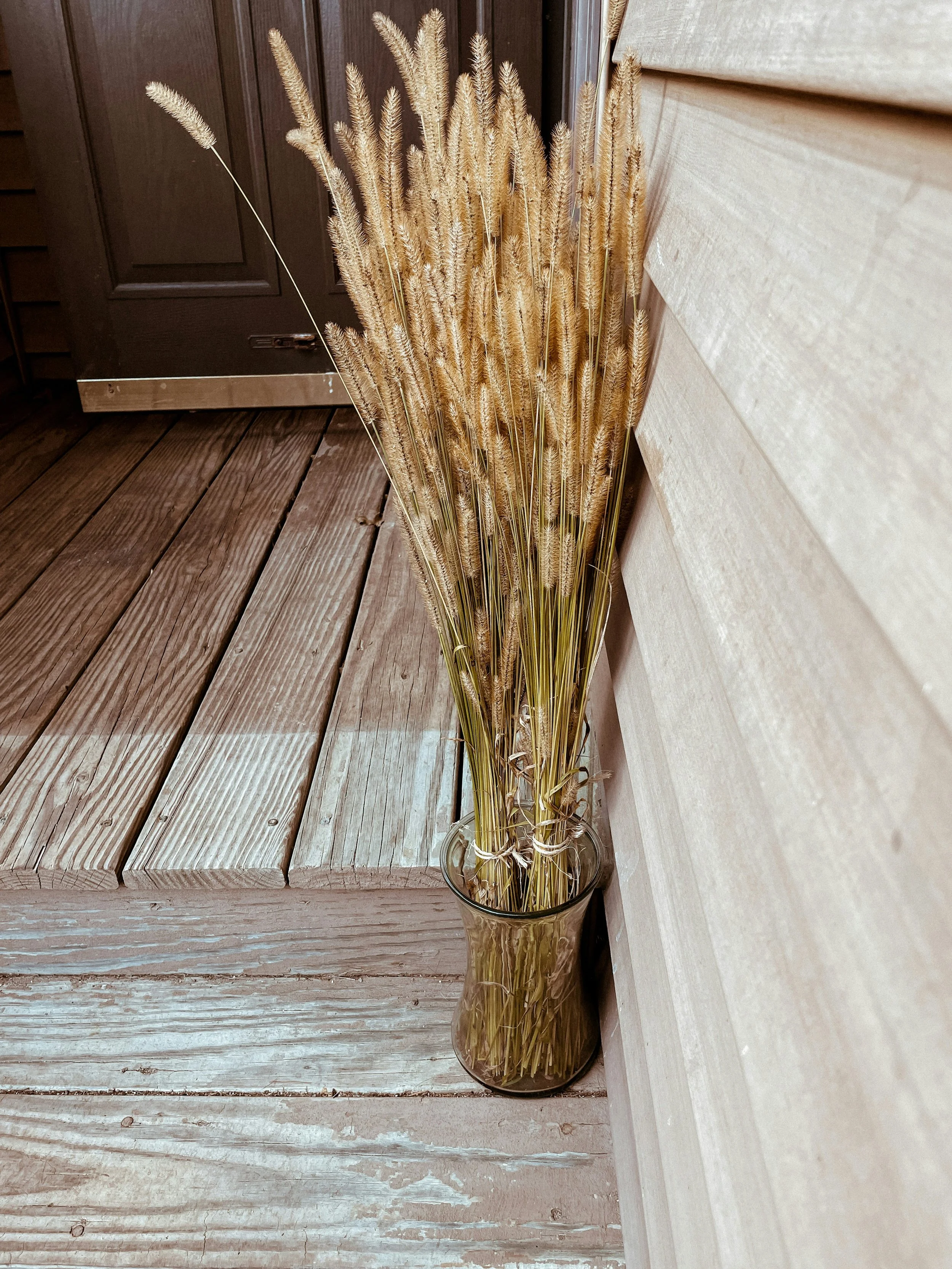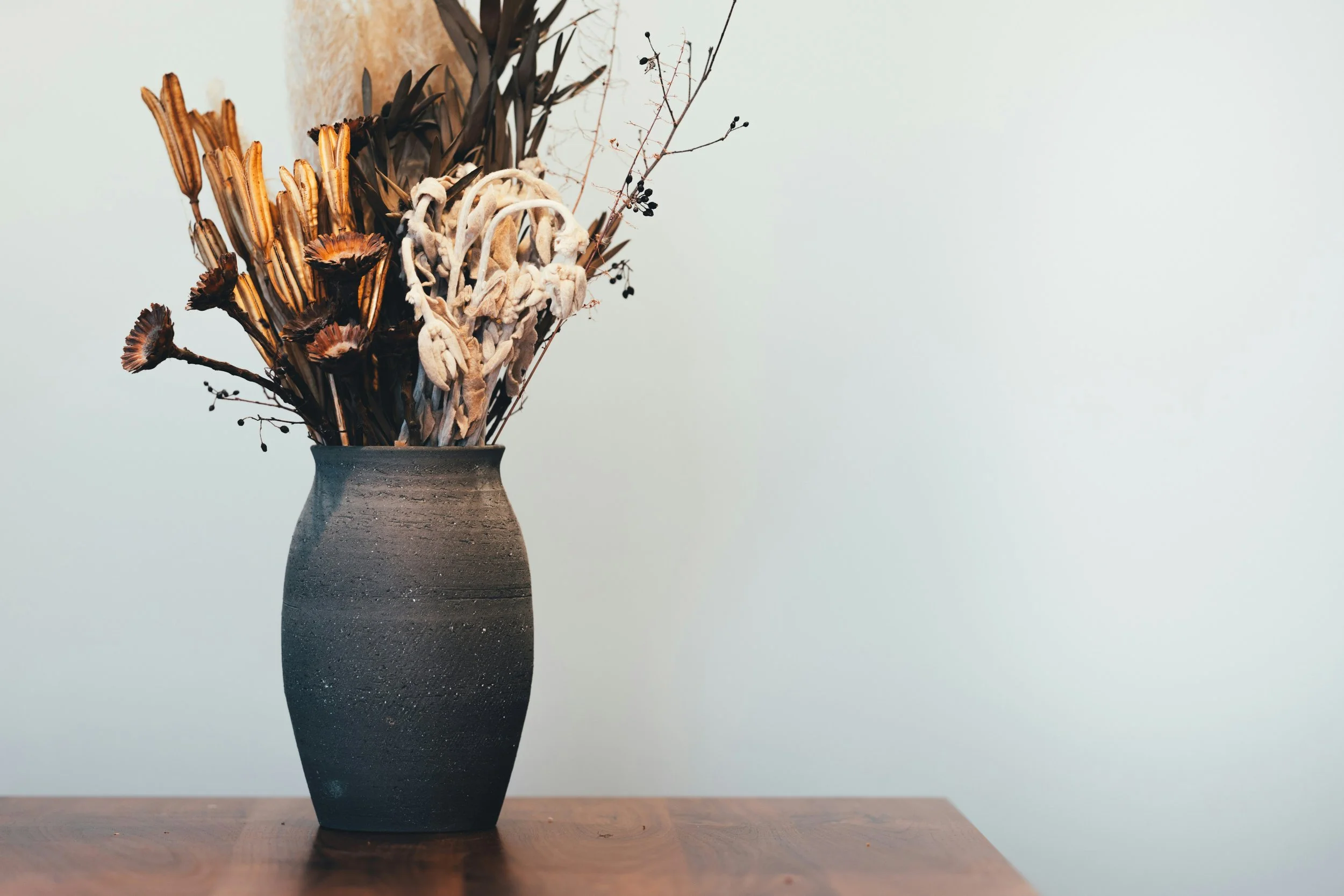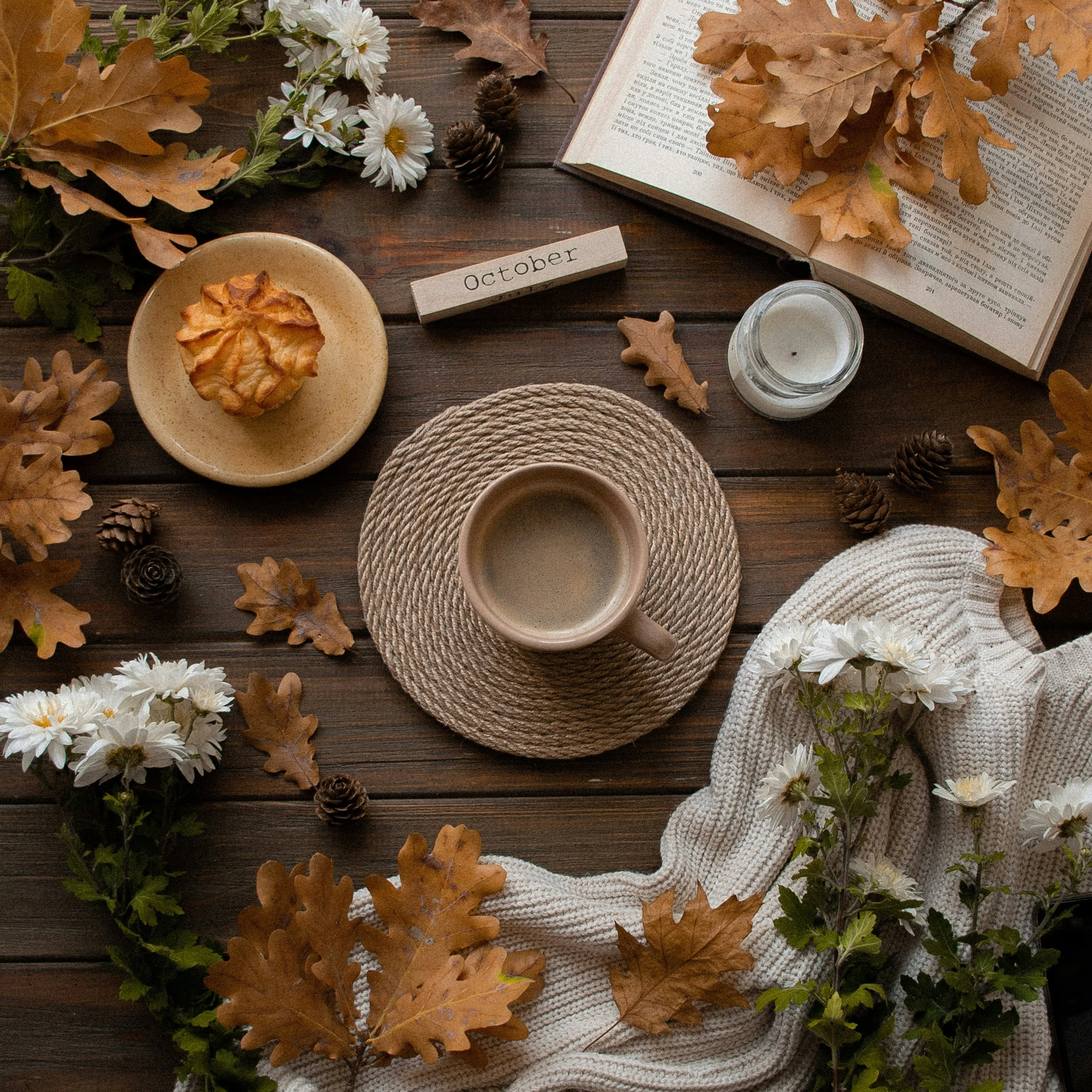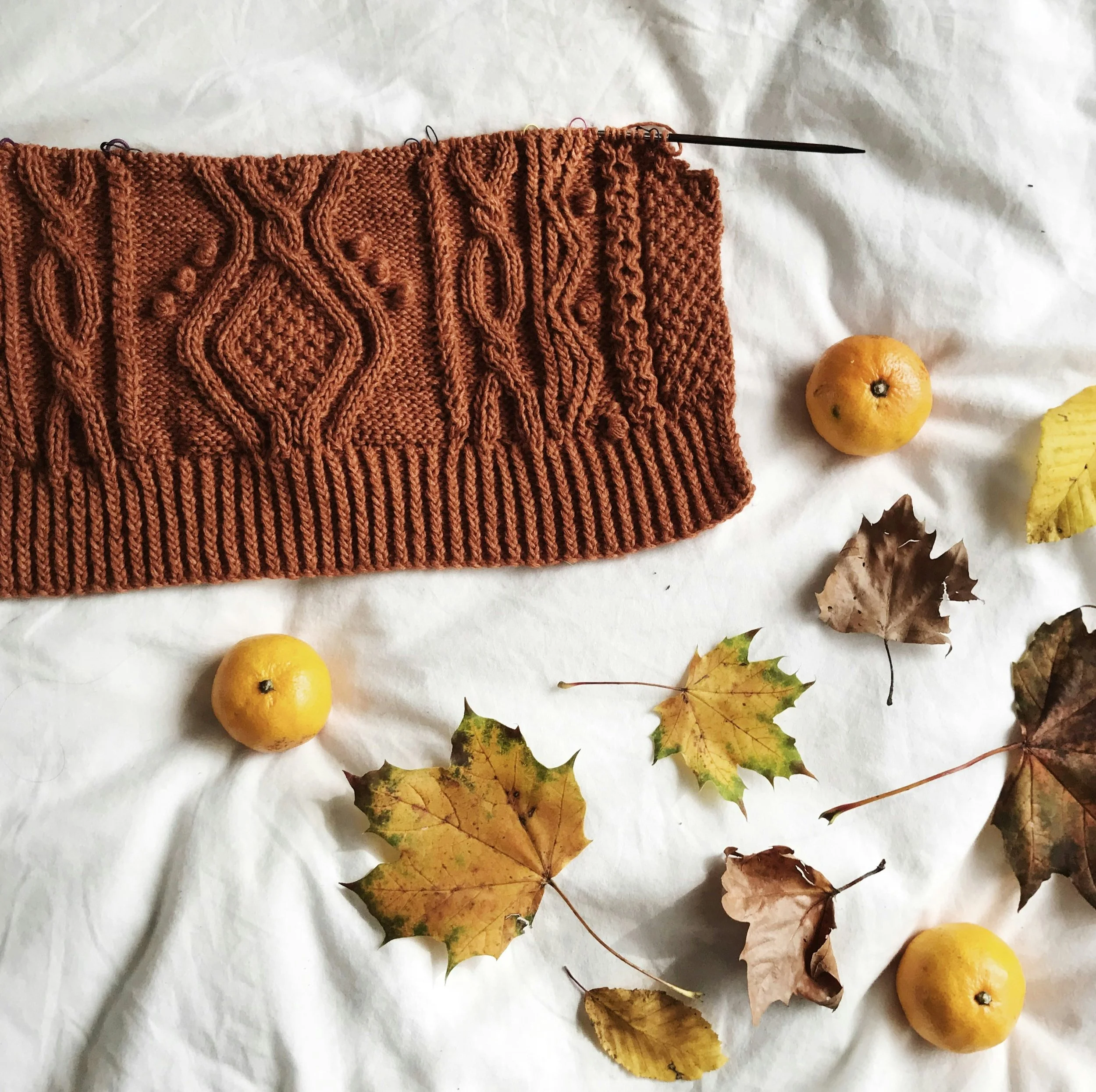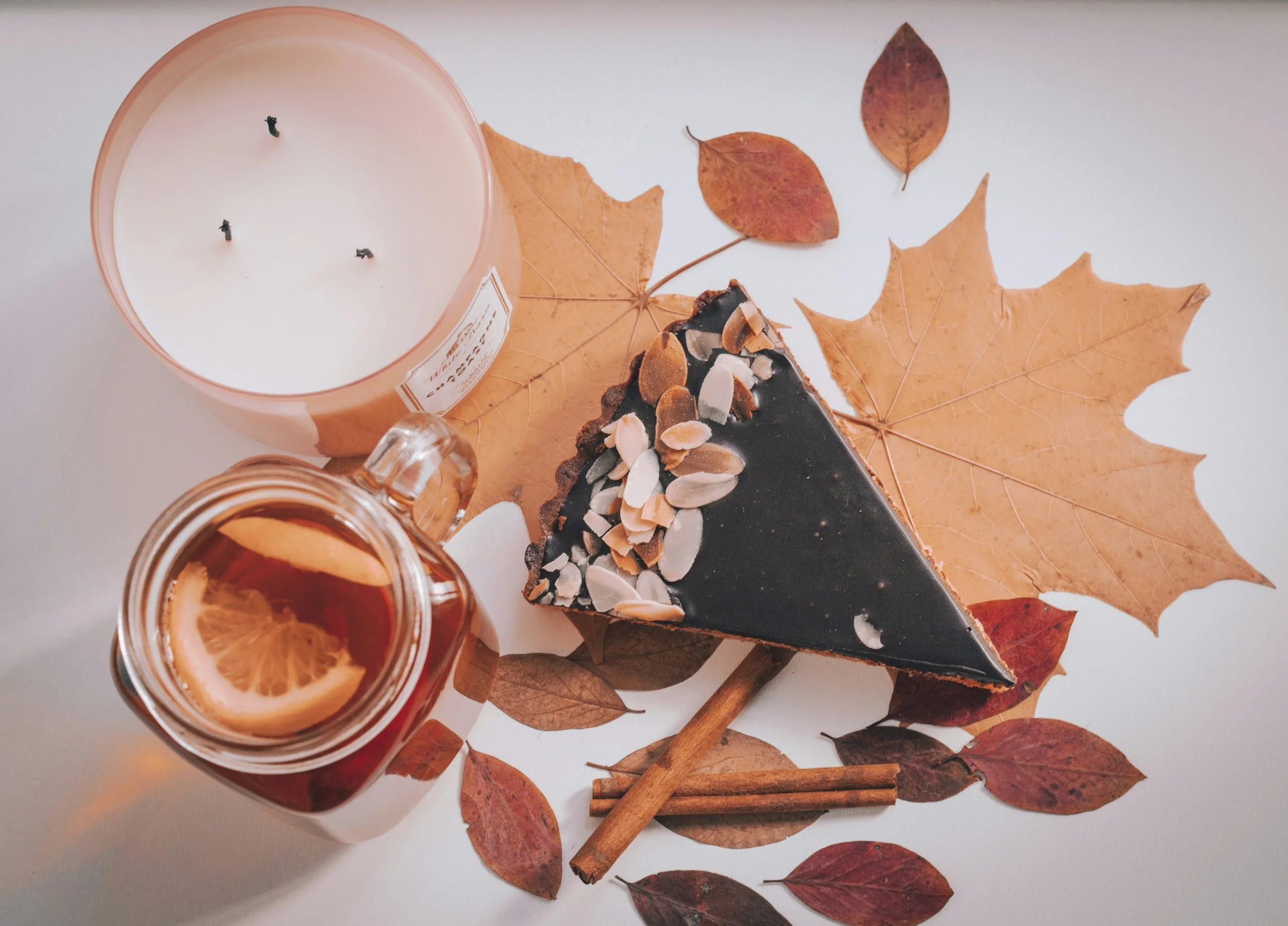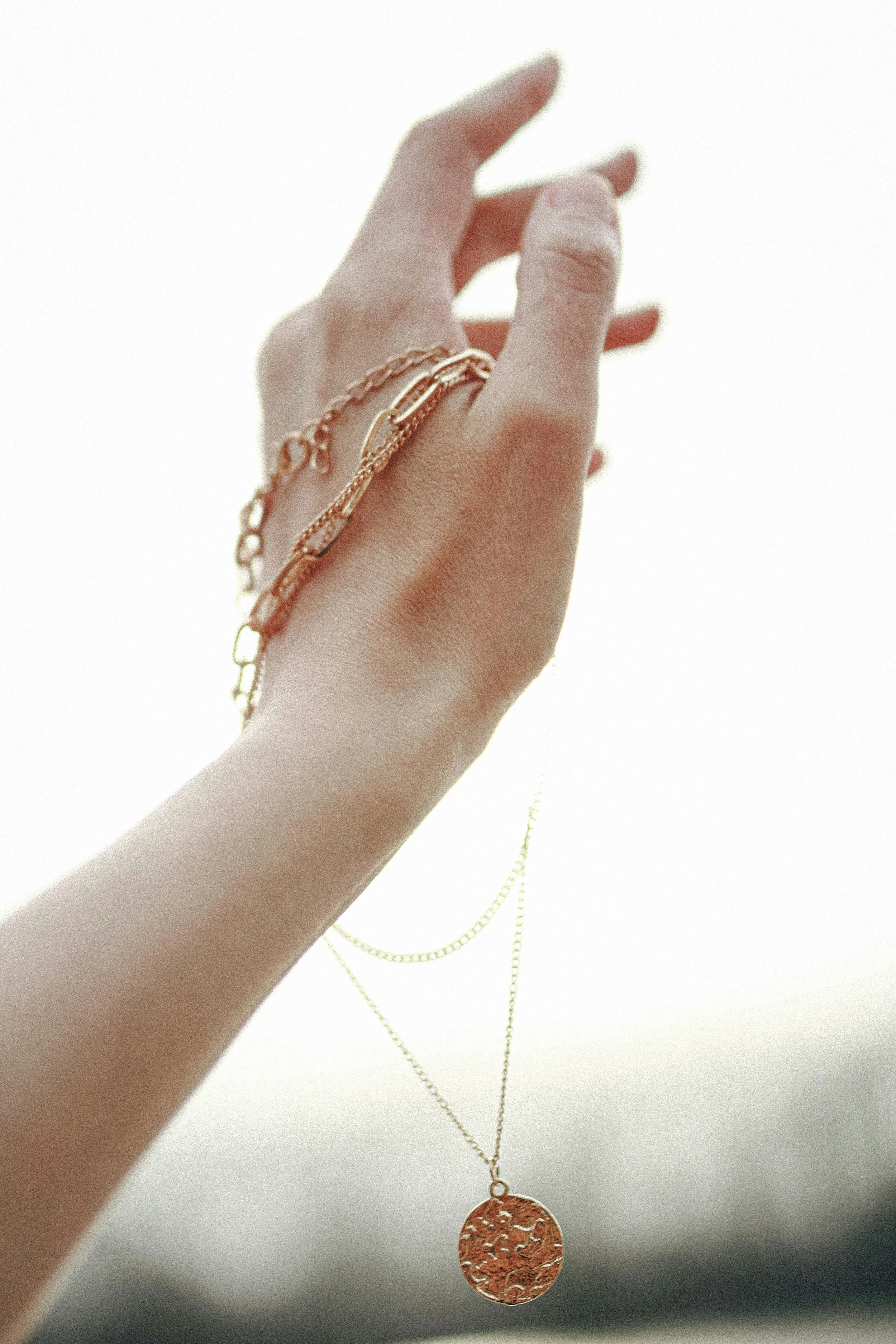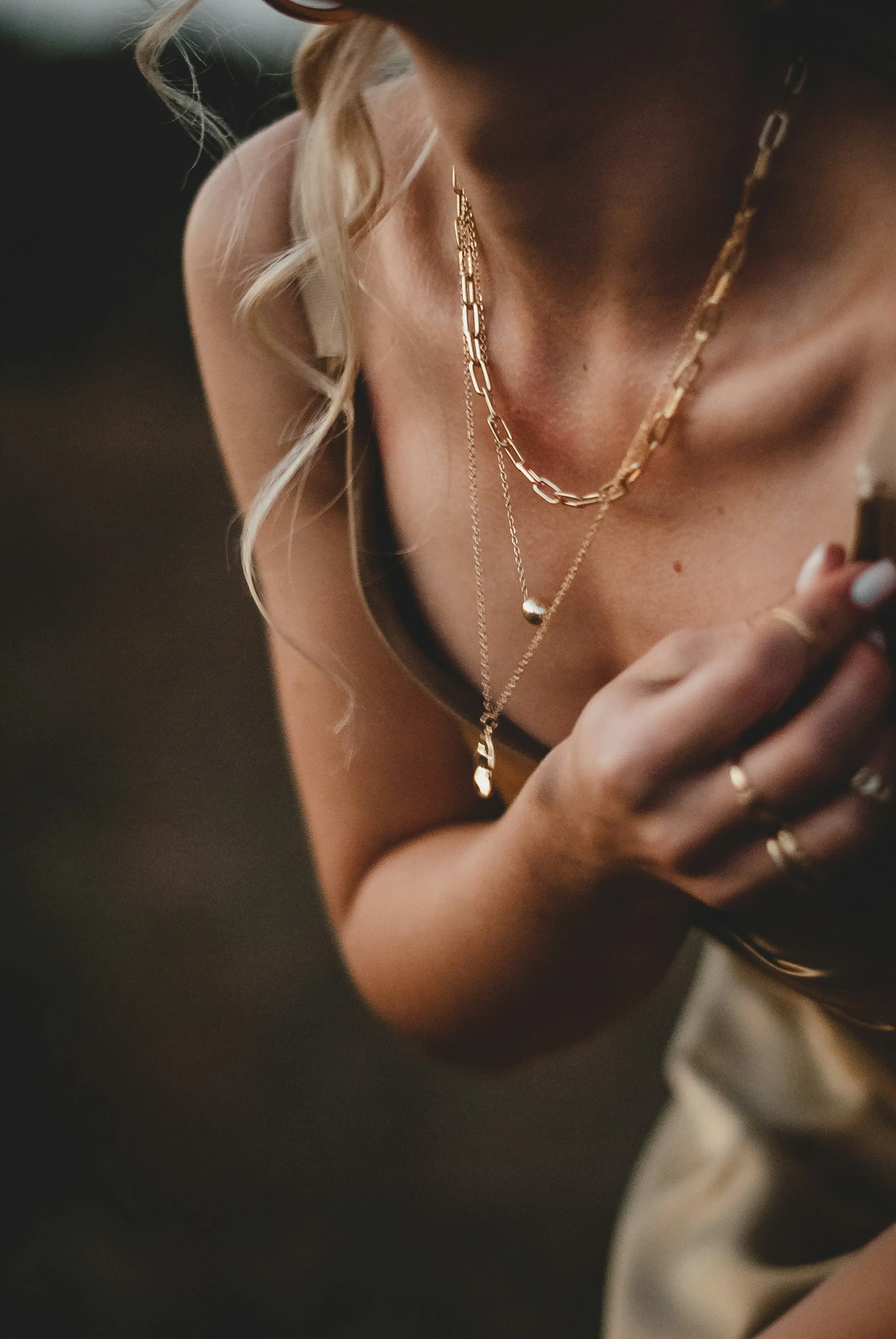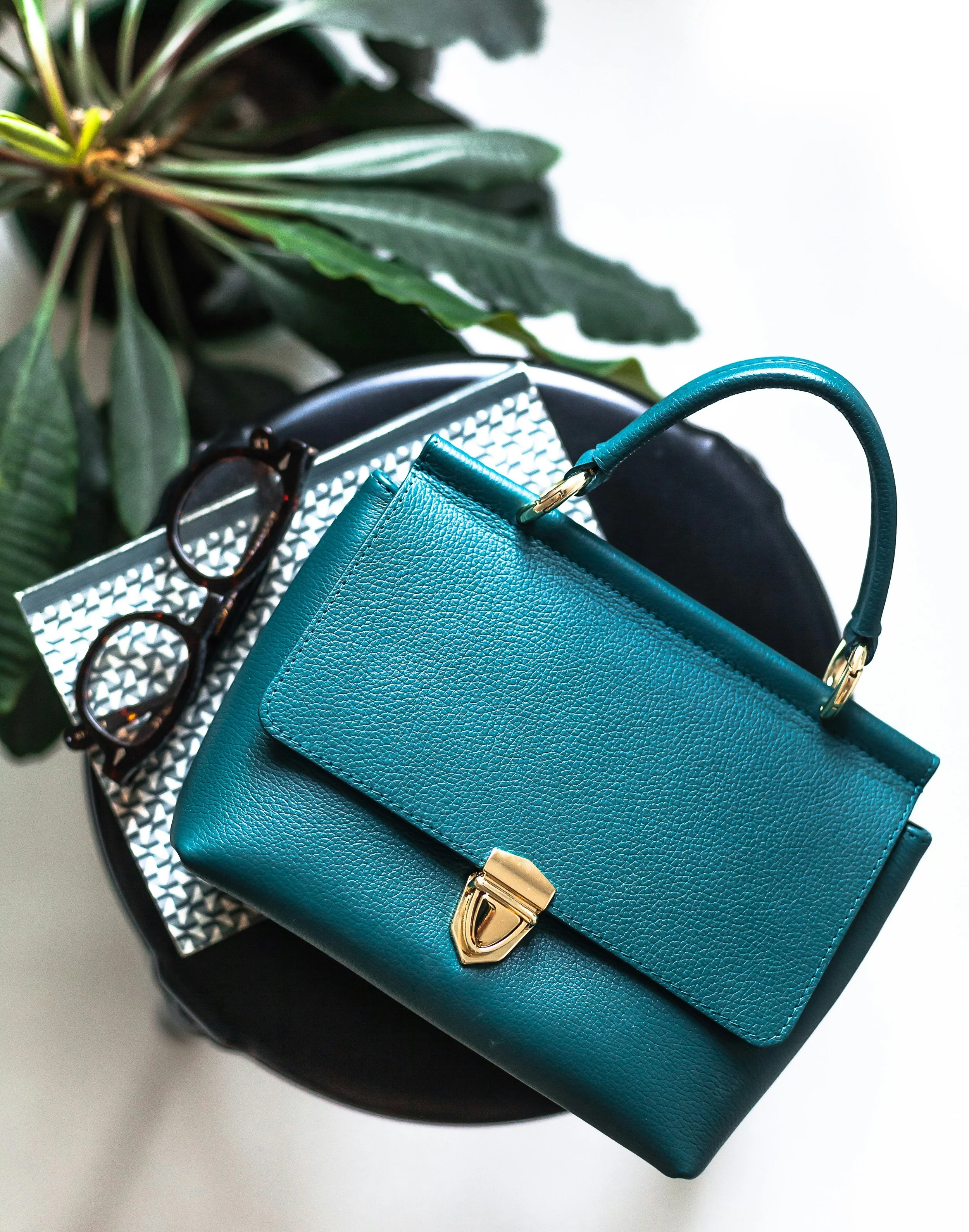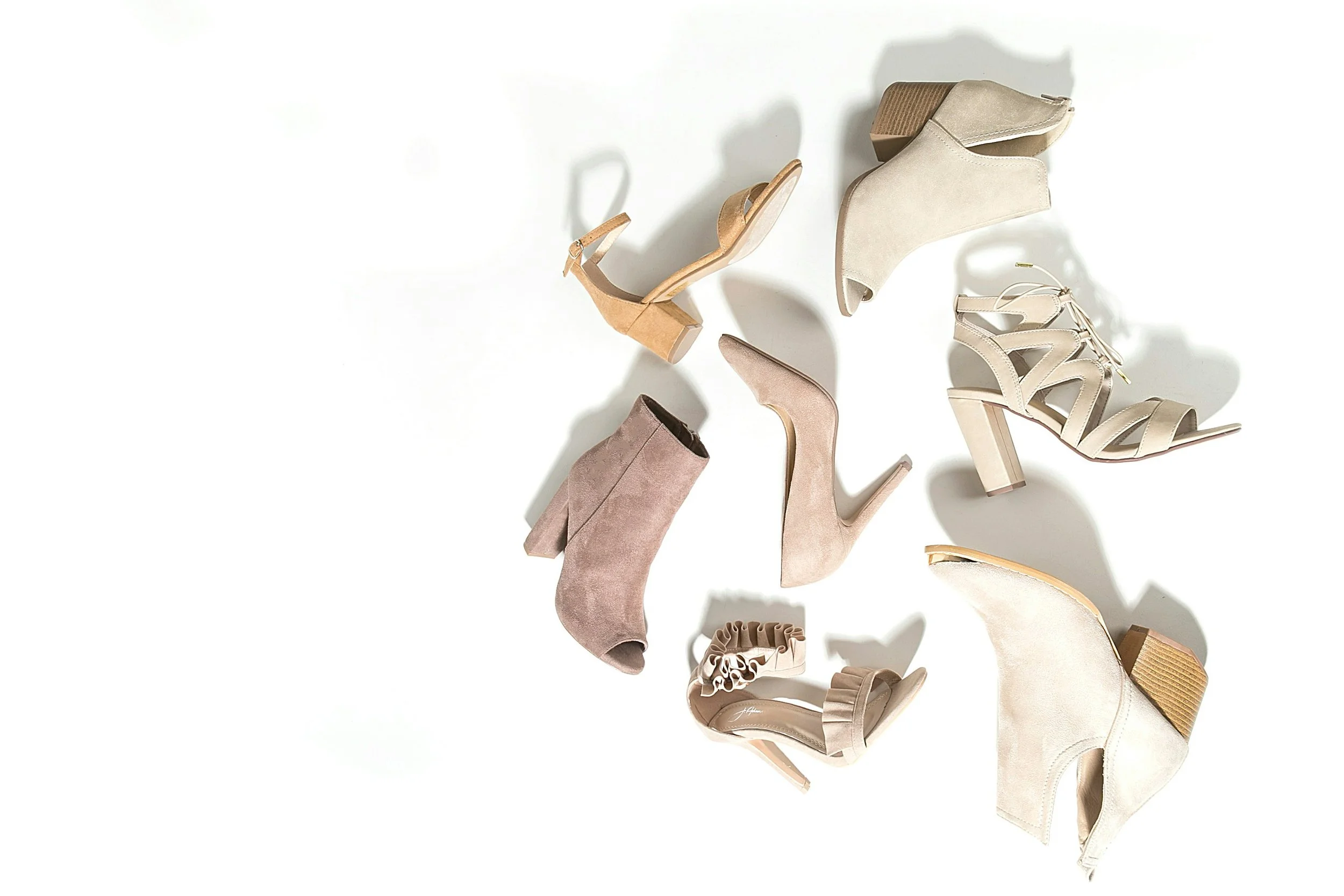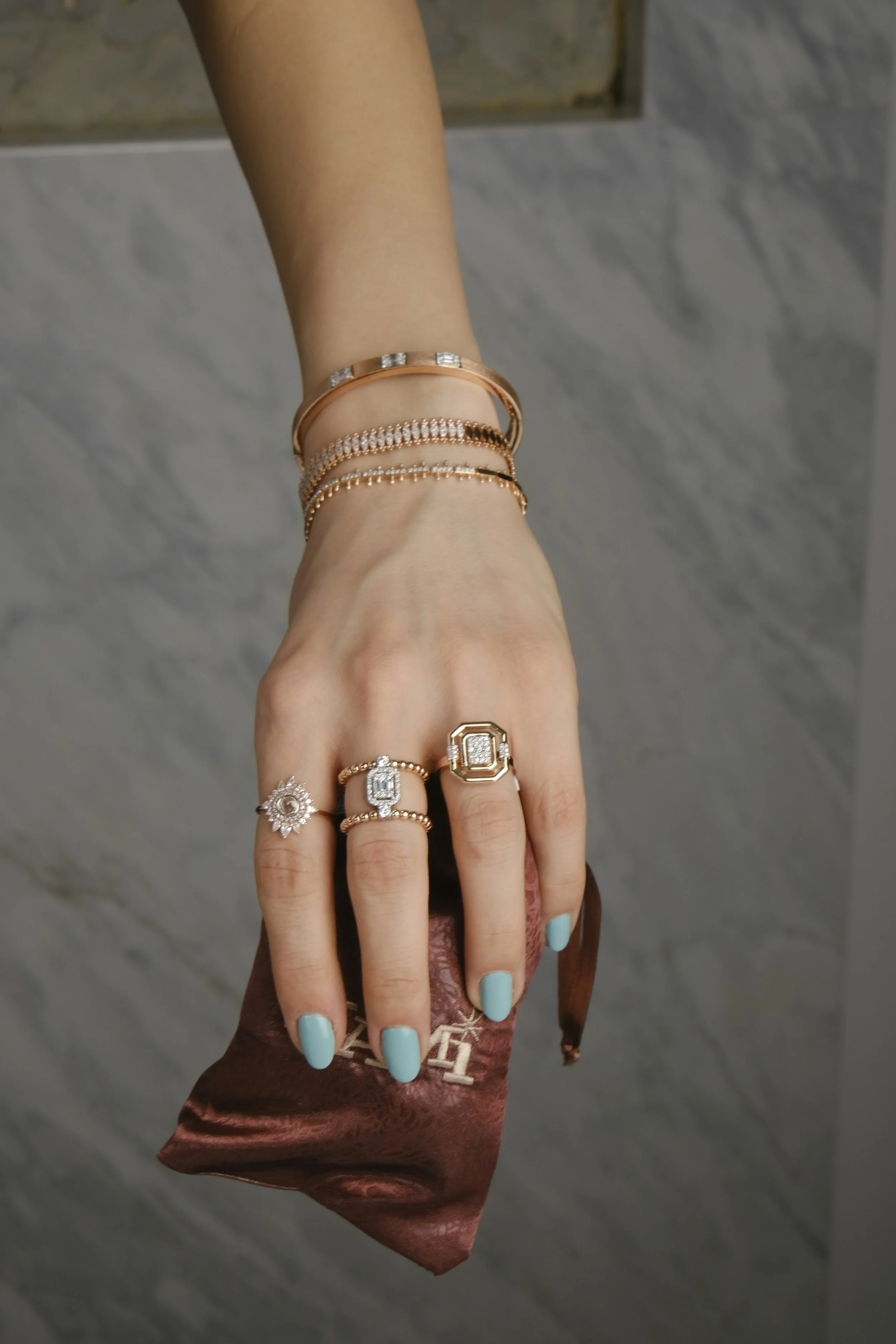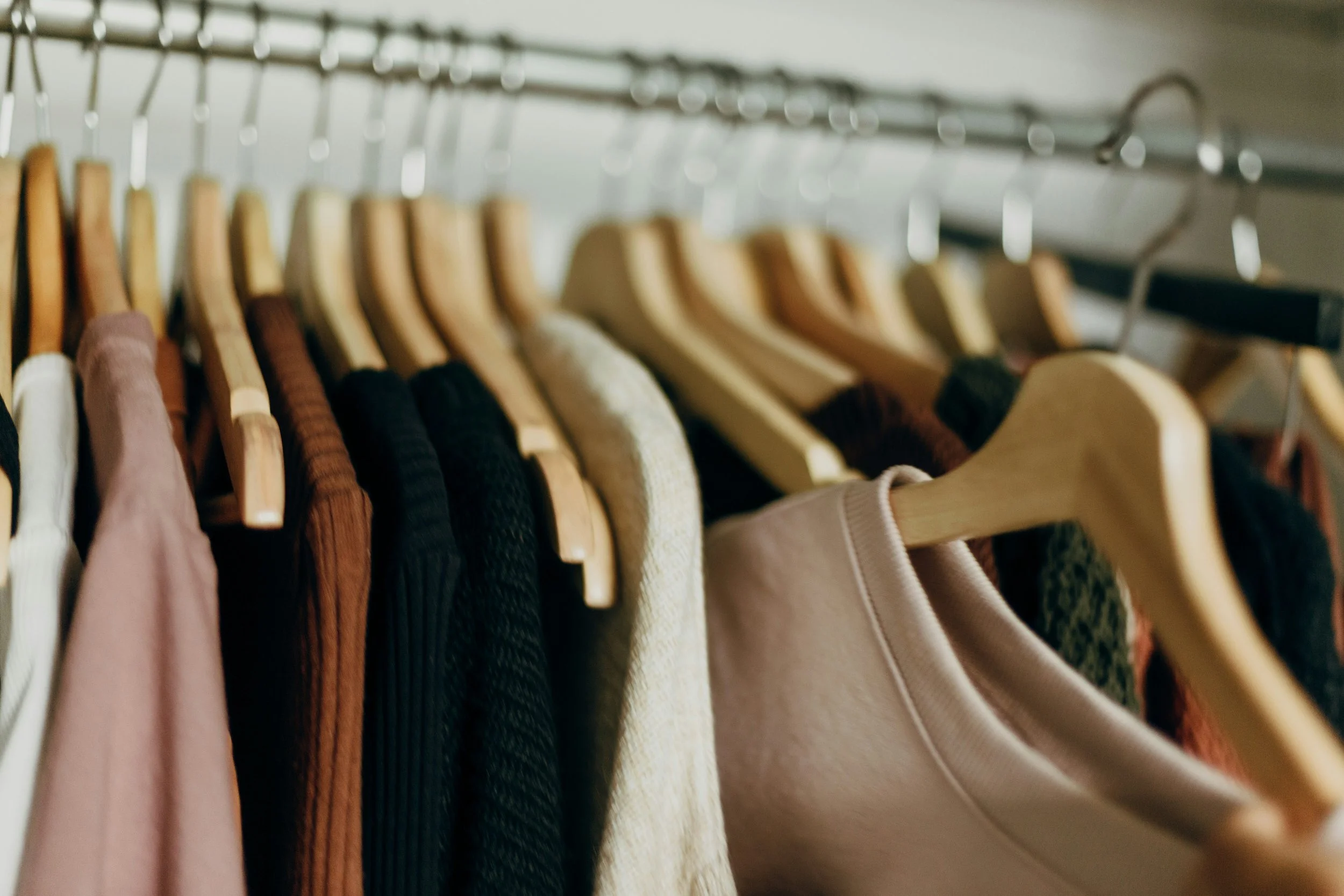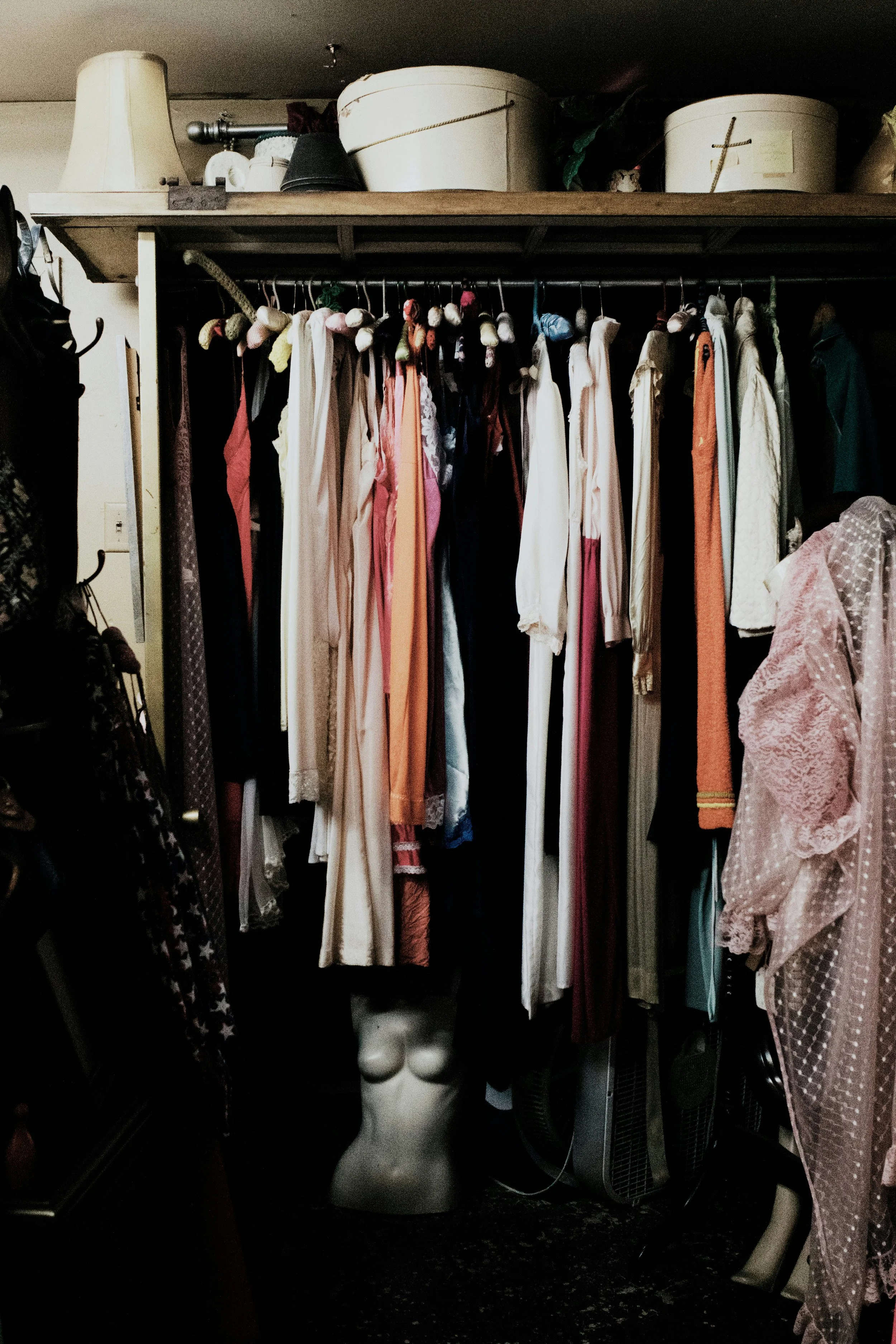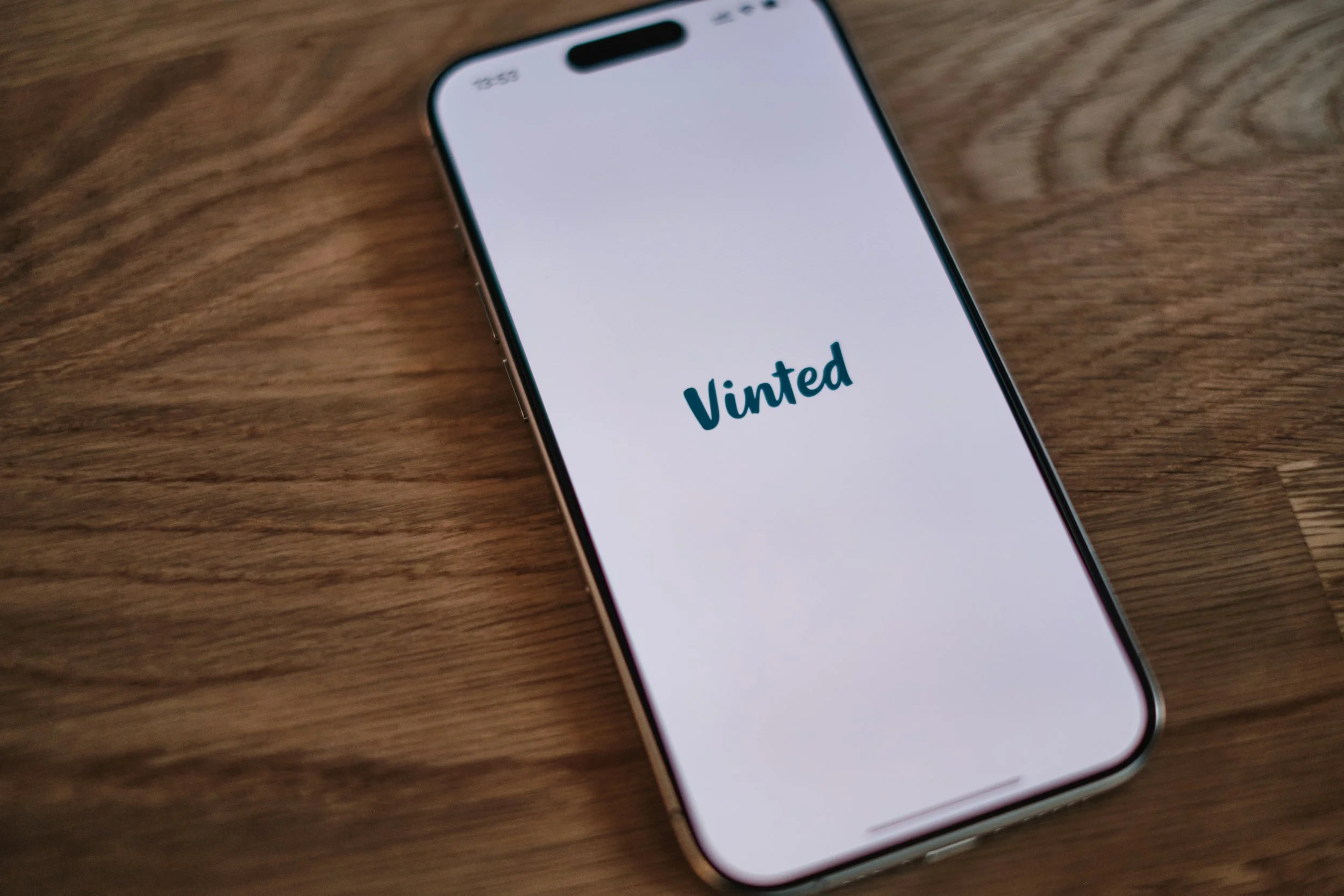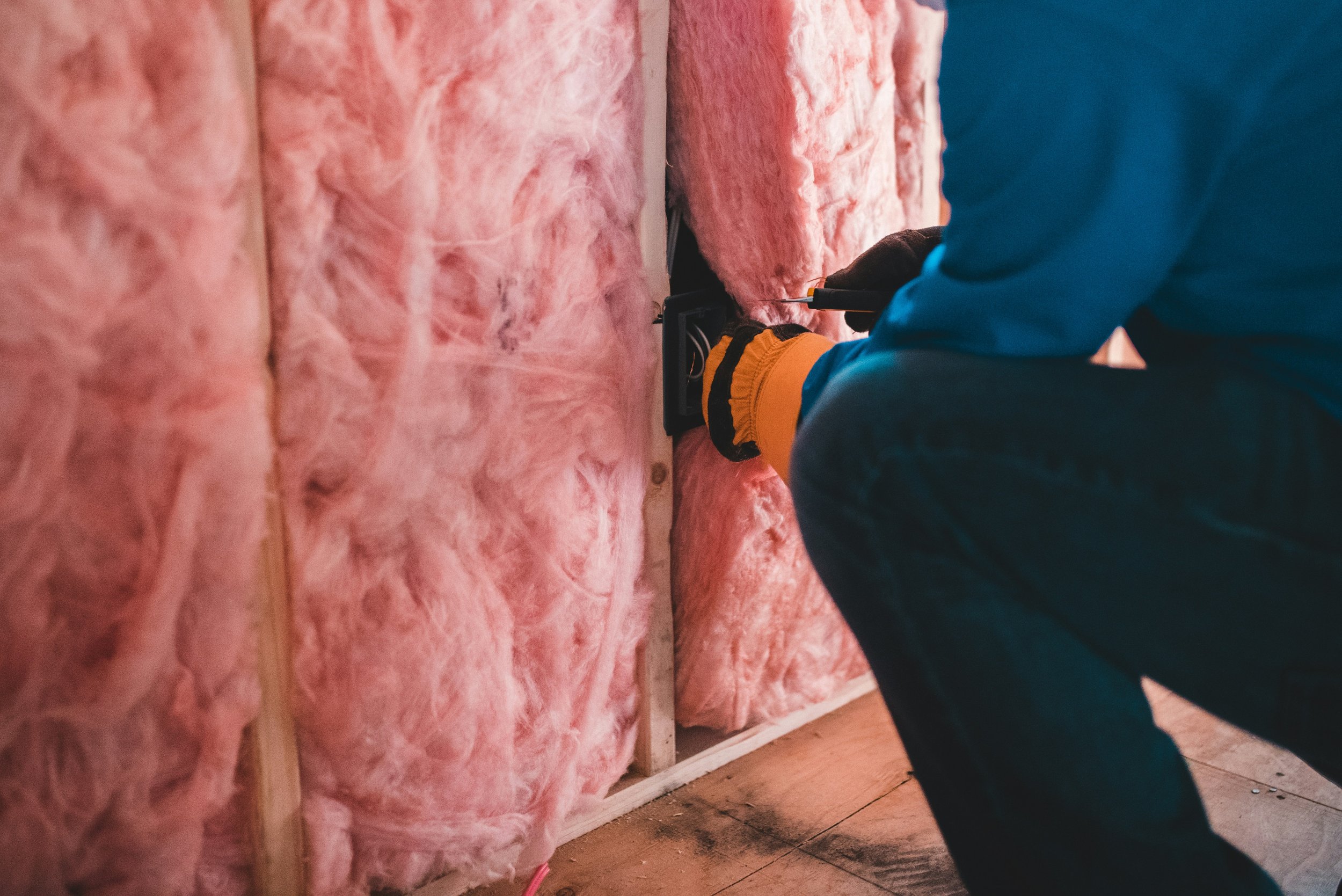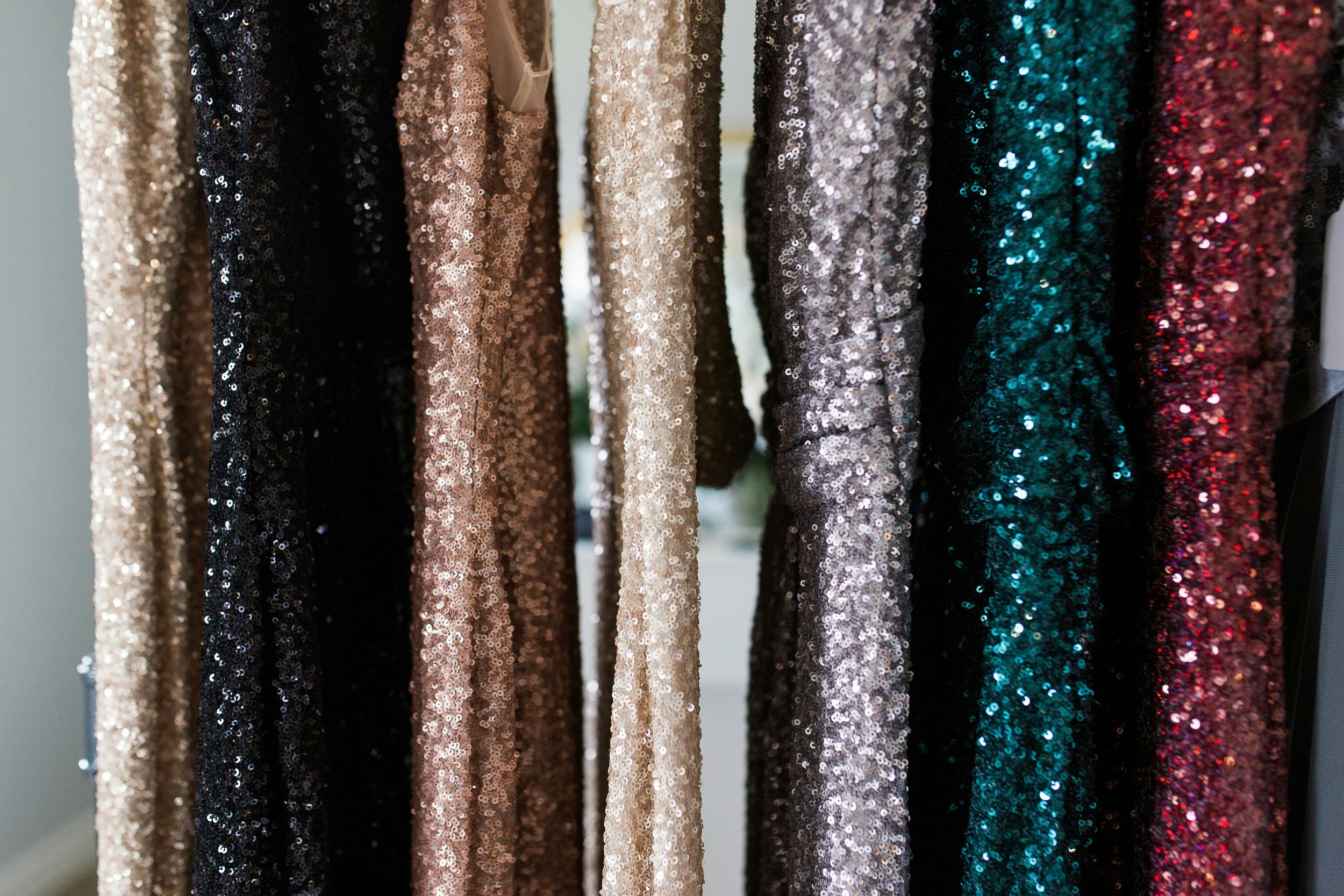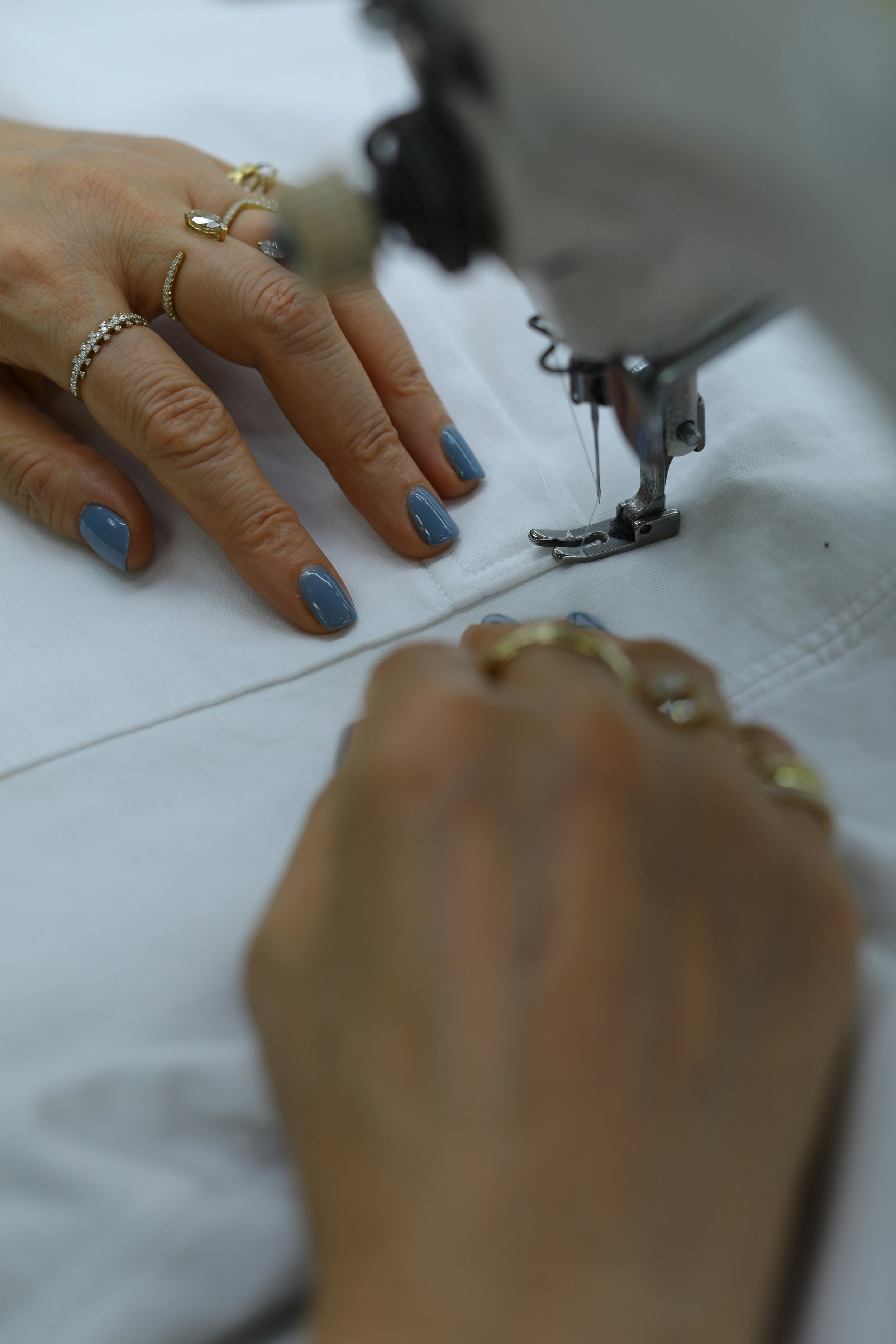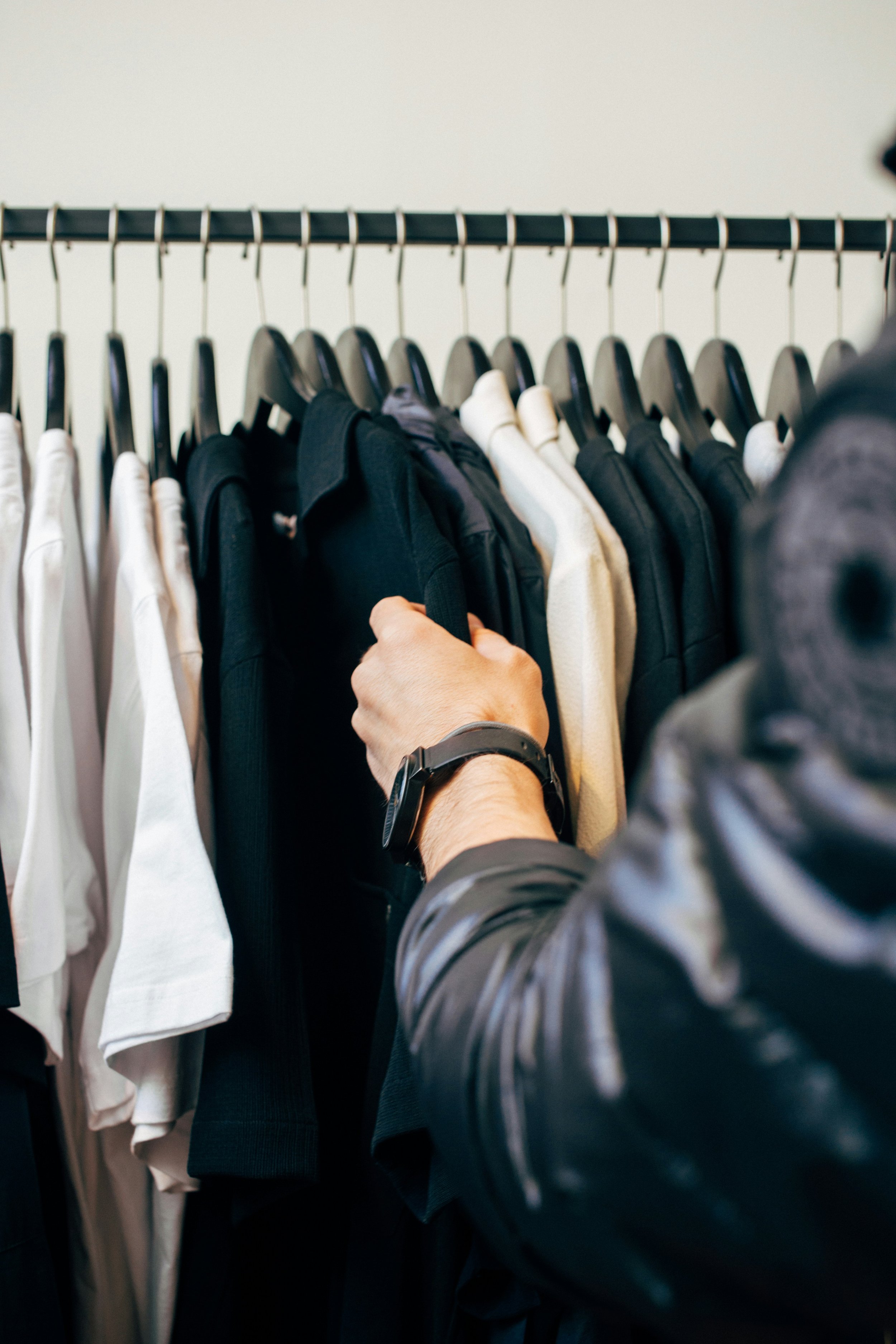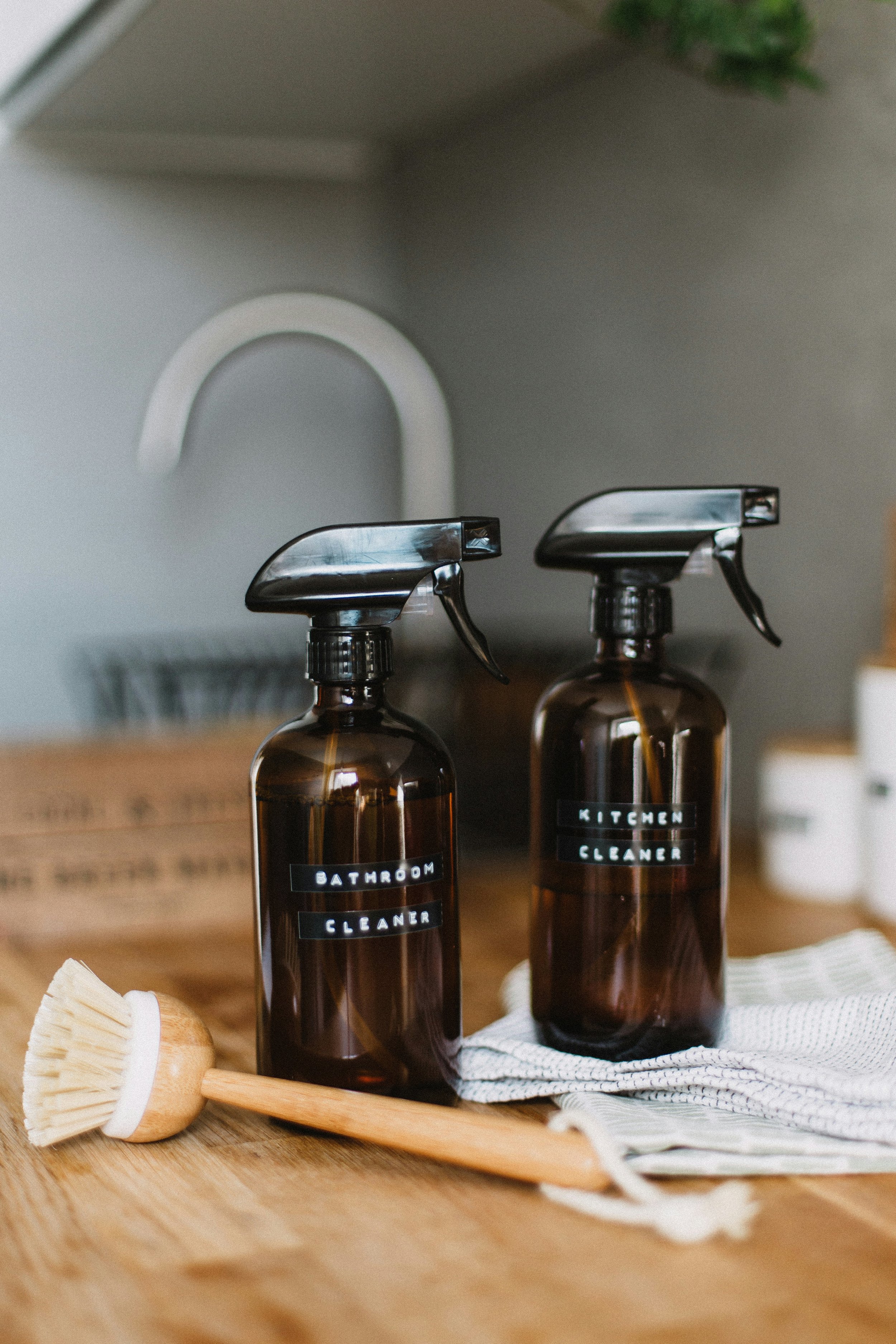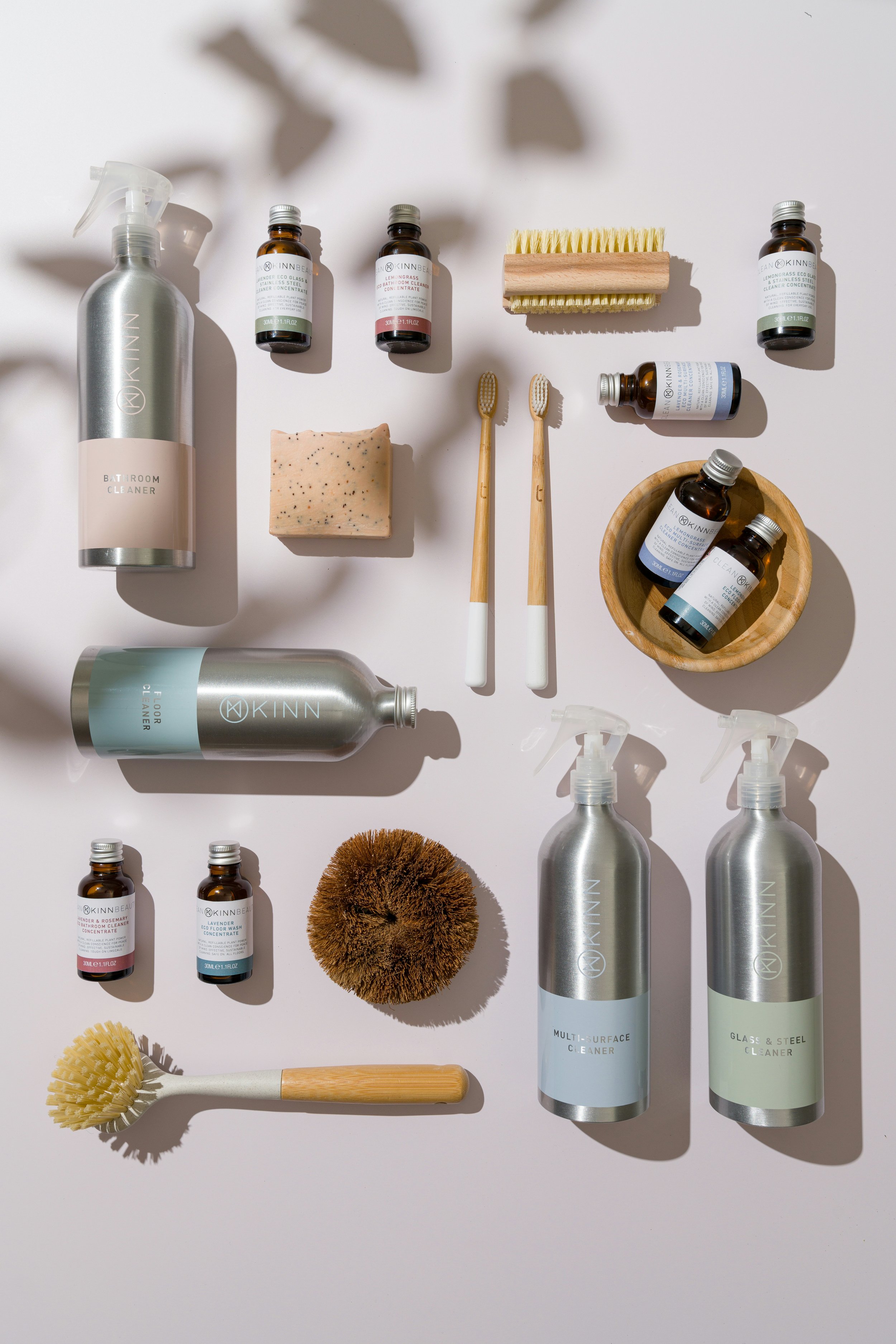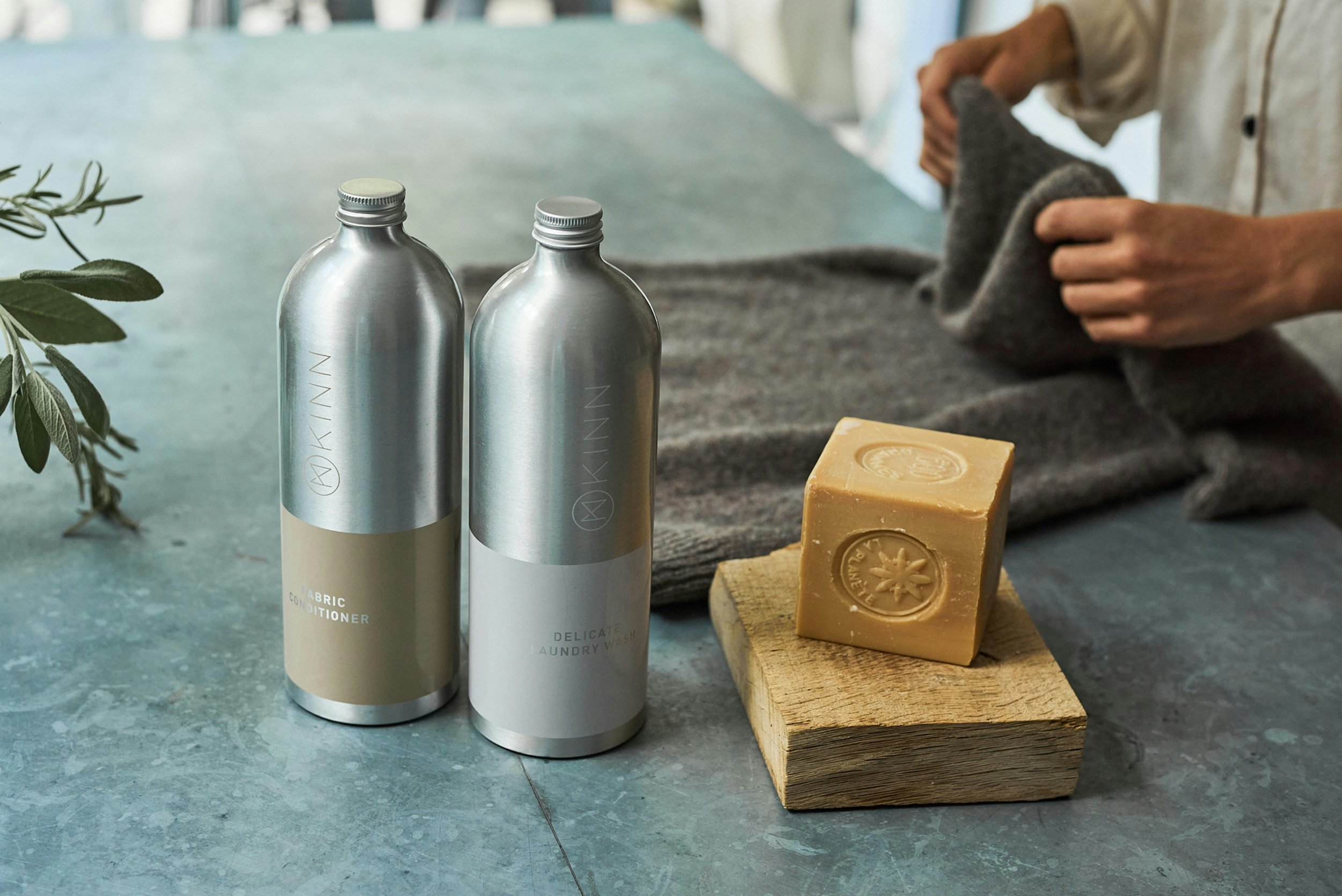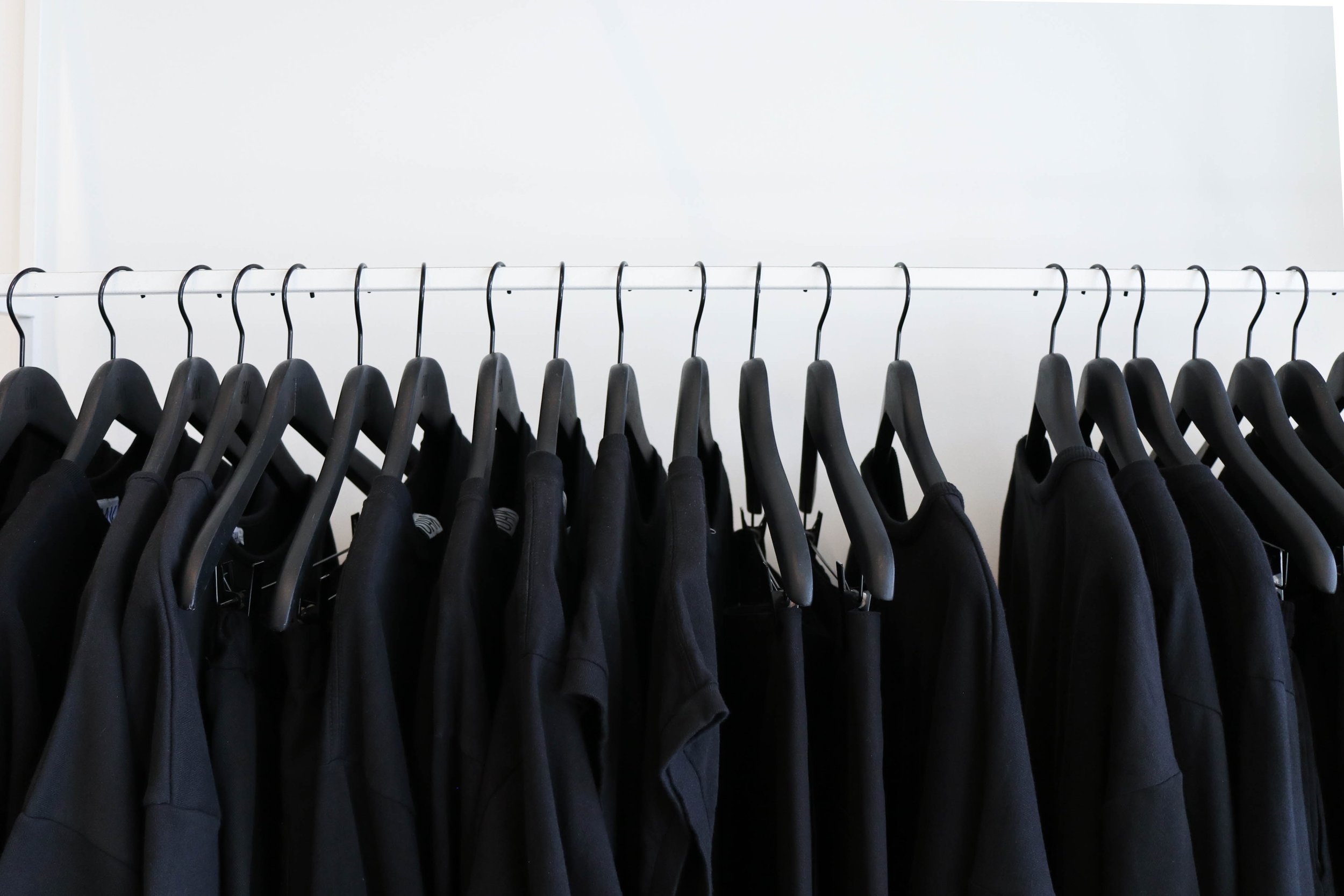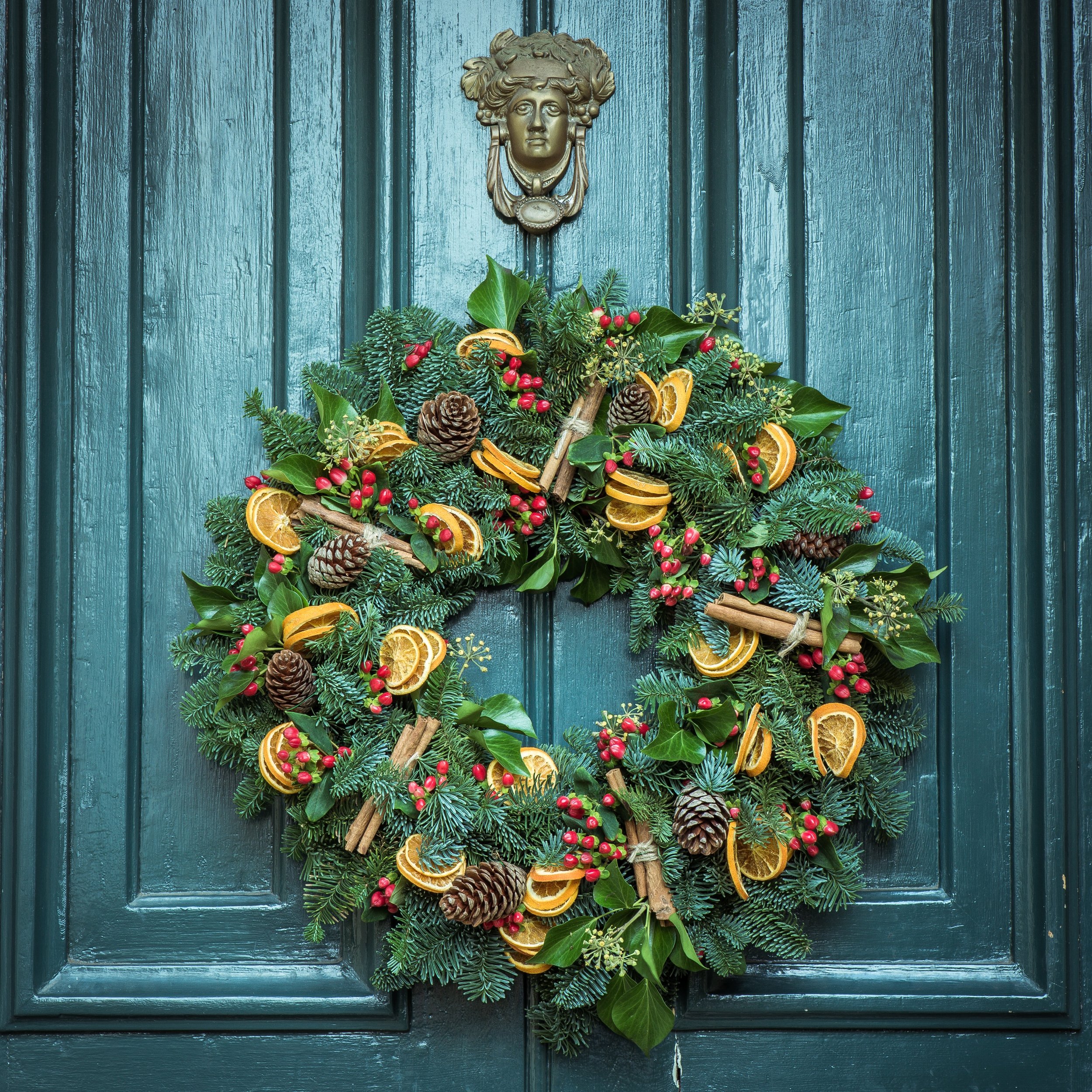How to do Autumn Décor Sustainably
Lots of people are choosing to switch up their home ornaments and decorations as the seasons change. This is a lovely way to vary home décor and mark the rhythm of the year but can involve spending a lot of money on non-sustainable items.
Here’s our guide to doing autumn décor the sustainable way:
1. Natural Elements: In autumn, nature gifts us lots of gorgeous things to incorporate into wreaths and arrange in bowls or on tables.
Photo by Tanja Tepavac on Unsplash
◦ Collect pinecones, acorns, colourful leaves, and even branches from your garden or local park.
Photo by Gaelle Marcel on Unsplash
◦ Use branches as foundations for mantel and window sill displays, adding in colourful natural autumn finds
Photo by Preethi Viswanathan on Unsplash
◦ For an easy table centrepiece, fill a bowl or clear vase with pinecones, acorns and horse chestnuts
Photo by Piermario Eva on Unsplash
◦ Consider using dried flowers and grasses, which can add texture and warmth to your space.
1. Upcycled Decor: Get creative with items you already own or can source at a charity shop
◦ With some ribbon or lace, old glass jars can be transformed into candle holders or vases
Photo by Vika Strawberrika on Unsplash
◦ Fabric scraps can be sewn into autumn-themed table runners decorative cushions, or even napkin rings.
Photo by Laura Chouette on Unsplash
◦ Jumpers can be upcycled into cosy vase holders or pumpkin ornaments. There are plenty of tutorials online.
Photo by Julia Peretiatko on Unsplash
1. Avoid plastic: There are lots of plastic garlands, ornaments and fake flowers around but sustainable options often bring a warmer, more personal touch.
Photo by Olesia 🇺🇦 Buiar on Unsplash
◦ Instead of opting for plastic, choose real pumpkins for your autumn decor. They can be carved for Halloween and later cooked into soups or pies, or simply displayed as is, then composted.
Photo by Yiğit Ali Atasoy on Unsplash
◦ Ditch plastic autumn fairy lights and use pretty fallen leaves to create a beautiful, natural display. Wallflower Kitchen shows you how to preserve leaves using wax paper. https://wallflowerkitchen.com/diy-autumn-leaf-fairy-lights/
Photo by Edz Norton on Unsplash
◦ If you want to buy ornaments, look for wooden or bamboo items sourced from sustainable forests and reuse them year on year.
Photo by Sixteen Miles Out on Unsplash
1. Eco-Friendly Lighting: Use LED lights for your autumn displays. They consume less energy and last longer than traditional bulbs. Consider string lights or lanterns made from recyclable materials to create a cozy ambiance. You can also use solar-powered lights outdoors to illuminate your garden.
Photo by Milin John on Unsplash
2. Seasonal Plants: Incorporate potted plants like chrysanthemums, ornamental kale, or even small evergreen trees. These can be enjoyed throughout the season and then planted in your garden or kept as houseplants, reducing waste compared to cut flowers.
3. DIY Crafting: There are tons of autumn DIY craft projects online. Why not make an occasion of it and get together with friends and family to make autumn-themed art or wreaths using leaves, twigs, and other natural materials. This can be a fun way to spend time together while making unique decorations.
◦ Hobbycraft has a great selection of DIY craft projects all in one place: from simple crocheted pumpkins to complex quilted table runners https://www.hobbycraft.co.uk/ideas/autumn-home-decor-ideas.html
◦ To get kids involved, try one of the many ideas on this page: https://www.goodhousekeeping.com/life/parenting/g33276111/fall-crafts-for-kids/
Photo by Debby Hudson on Unsplash
4. Reuse: It goes without saying that sustainable décor means reusing what you have. If you want to add to your collection, try making something new every year rather than buying it and start a fun tradition!
Photo by Ksenia Yakovleva on Unsplash
Creating autumn decor sustainably not only enhances your home’s seasonal charm but also allows you to celebrate the beauty of nature while minimizing your environmental impact. We hope you enjoy getting creative!
How to Accessorise like a Pro
Photo by Harper Sunday on Unsplash
Accessorising is an art form that can elevate your outfit from ordinary to extraordinary. It’s an opportunity to add personality to your look, to make your wardrobe more versatile and to have fun. Whether you're dressing for a casual day out, a formal event, or anything in between, the right accessories can make all the difference. Our “How to…” guide breaks it down and offers some tips on how to be creative.
Photo by amir riazipour on Unsplash
Before you start accessorising, take a good look at your outfit. Consider the colour palette, style, and occasion. What do you want your appearance to say? “I’m confident and efficient”? “I’m rebellious and non-conformist”? “I’m approachable and warm”?
Photo by Dạy Vẽ Trên Vải on Unsplash
You can send signals with your accessories, varying them by colour, size, theme and design. Smaller classic items express a more reserved, conservative outlook compared to unusual or large, bright, bold pieces which can convey playfulness, unconventionality or extroversion.
1. Jewellery
Jewellery is a powerful tool in your accessorising arsenal. When selecting pieces, think about the balance between bold and subtle. For more formal daytime looks, delicate necklaces or stud earrings can add a touch of elegance without overwhelming your outfit. For evenings and casual daytime wear, don’t shy away from statement pieces like chunky necklaces or oversized earrings.
Photo by Anastasia Anastasia on Unsplash
If you're wearing bold jewellery, such as a statement necklace, keep other accessories minimal to maintain balance.
Layered necklaces look great with lower necklines. Choose pieces of different lengths and complementary colours.
Photo by Kateryna Hliznitsova on Unsplash
Single necklaces look good when carefully paired with a neckline:
• Crew Neck: go for short 16-18 inches (Princess or Choker)
• V-Neck, scoop neck and off the shoulder: choose 18-24 inches (Princess or Matinee)
• Strapless: looks great with 16-20 inches (Choker or Princess)
• High Neck: try long 20-30 inches (Matinee or Opera)
2. Bags
A stylish bag is not just an accessory but a necessity. Choose a bag that complements your outfit and is practical for your day. A crossbody bag is perfect for a casual outing, while a clutch can add sophistication for an evening event.
Photo by Diana Light on Unsplash
Creative Tip: Consider using a smaller bag as a pouch inside a larger tote. This not only keeps your essentials organised but also allows you to switch up your look by simply removing the pouch when you don’t need the larger bag
3. Scarves
Scarves can be used to add a splash of colour, keep you warm, or even serve as a statement piece.
Photo by Alexa Portoraro on Unsplash
Creative Tip: Try using a scarf as a hair accessory or headband. You can braid it into a ponytail or wrap it around a bun for an effortlessly chic look. Or tie one to your bag for a pop of colour or pattern.
Photo by Nathan Dumlao on Unsplash
4. Hats
Hats can be a game-changer for any outfit. From fedoras to beanies, they not only offer protection from the elements but also add character to your look.
Photo by Mary Oloumi on Unsplash
Creative Tip: Use a hat as a unique display for your accessories. Hang necklaces or scarves from the brim for an artistic touch when not in use or place it on a shelf as part of your decor.
Photo by Mary Oloumi on Unsplash
5. Footwear
The right shoes can transform an outfit and make you feel great. Ask yourself:
Photo by Kier in Sight Archives on Unsplash
• How formal is the event?
• Will I be outside? What’s the weather like? How much walking do I need to do, and can I cope with heels?
• What’s the style of my outfit? And do I want to play with contrasts like trainers with a summer dress?
• What colours am I wearing? Neutrals can be versatile while bold colours can make a statement.
• What’s the silhouette of my outfit like? Do I want to complement it or contrast? Boots or strappy sandals with a flowy skirt?
• How are you feeling? Do you need the confidence boost of some heels or the comfort of something kinder to your feet?
Photo by Jaclyn Moy on Unsplash
6. Experiment and Personalise
Finally, the best way to accessorise like a pro is to experiment. Don’t be afraid to mix and match different styles, colours, and textures. Personalise your accessories to reflect your personality—whether that’s through vintage finds, handmade pieces, or items that have sentimental value.
Creative Tip: Try layering multiple pieces of different types of accessories, like stacking rings with bracelets or wearing multiple necklaces of varying lengths for a bohemian look.
7. Sourcing accessories
Charity shops and online platforms like Vinted and Depop are a great source when you’re searching for accessories, particularly if you want to take a risk and try something different. For a vintage vibe, ask your older friends and relatives whether they have items they could pass on.
Photo by Prahant Designing Studio on Unsplash
Accessorising is all about enhancing your personal style while ensuring practicality. By understanding your outfit, choosing the right jewellery, and adding those finishing touches, you can accessorise like a pro. Remember, the key is to have fun with it and let your personality shine through your choices. Happy accessorising!
How to Clothes Shop Sustainably on a Budget
Genuinely sustainable clothing can be expensive but a small clothing budget doesn’t mean that you can’t be planet-friendly.
Better still, shopping for low cost sustainable outfits can be a lot of fun. Our How to Guide shows you how.
Photo by Hong Nguyen on Unsplash
1. Buy nothing. The cheapest (and most extreme) approach! It might seem out of reach, but a quick social media search will soon locate others who are on the same path and have tips and encouragement to share.
Photo by Andrej Lišakov on Unsplash
◦ Check out what you have in your wardrobe and consider whether you really need anything else.
Photo by Priscilla Du Preez 🇨🇦 on Unsplash
◦ Where there are gaps, ask friends to raid their own wardrobes or wait until your birthday/ Christmas.
Photo by Niko Tsviliov on Unsplash
◦ If you need support, take a social media “buy nothing new” challenge.
Photo by Adithya Reza on Unsplash
2. Get the sales dates in your calendar. Many sustainable brands run sales and offers where you can pick up good deals on high quality clothing.
Photo by Maddi Bazzocco on Unsplash
◦ Try to plan your shopping in advance so that you can be sure to catch the sales early when you’ll have the best choice.
◦ Regularly check to see what needs replacing so that you can get a head of the game and avoid paying full price.
◦ January sales – from 1st, throughout January
◦ Spring clearance sales fall in late March to early May
◦ Easter sales start 2-3 weeks before Easter (mid-March 2026)
◦ Summer sales usually start in mid-June and peak around the beginning of July.
◦ Winter sales start on Black Friday (end of November) and then ramp up on Boxing Day
Photo by Arno Senoner on Unsplash
1. Make the most of Christmas and Birthdays. If you have the option, consider asking for higher price sustainable items like boots, shoes and coats, for your birthday or Christmas. People will often be thankful for gift ideas and you can ask for money from different people to make up the cost of a more expensive item.
Photo by Emily Pottiger on Unsplash
2. Shop Thrift/Charity Shops: It’s an obvious one but that’s because it’s such a good choice! Exploring local thrift stores and charity shops for second-hand clothing can lead you to unique pieces at a fraction of the original price while supporting charitable causes.
Photo by Adrienne Leonard on Unsplash
3. Online Resale Platforms: If you haven’t tried online platforms like Depop and Vinted, you are missing out! These peer to peer outlets are fantastic for picking up a bargain and for selling unwanted items. It feels good to save money and save clothing from land-fill
Photo by appshunter.io on Unsplash
4. Clothing Swaps: Organise or participate in clothing swap events with friends or community groups. It's a fun way to refresh your wardrobe without spending much money. Check out our blog on how to run a swap.
Photo by Toshi Kuji on Unsplash
5. Capsule Wardrobe: Another classic, the capsule wardrobe is your sustainable, minimalistic, reliable friend. Invest in a few high-quality, versatile pieces that can be mixed and matched. This approach reduces the need for frequent purchases and helps you create a sustainable wardrobe.
Photo by Priscilla Du Preez 🇨🇦 on Unsplash
6. DIY and Upcycling: Get creative by upcycling old clothes or making simple alterations to breathe new life into your wardrobe.
7. Renting Clothes: Consider renting outfits for special occasions instead of buying new ones. This is a sustainable option that allows you to wear something new without the commitment.
Photo by Klara Kulikova on Unsplash
8. Educate Yourself: Learn about sustainable fabrics and practices. This knowledge will help you make informed choices when shopping, even on a budget.
Photo by Maite Oñate on Unsplash
9. Prioritise Quality Over Quantity: It may take a bit more planning but focusing on buying fewer, high-quality items that will last longer is much cheaper in the long run.
Photo by Tanya Barrow on Unsplash
These tips can help you shop smarter and stick to your budget while being eco-friendly. We’d love to hear about your experiences!
How to use Less Household Energy
If you are looking to reduce your environmental impact, cutting your power use can make a big difference and save you money. Here’s our guide to help you decrease electricity and gas consumption both at home and while traveling.
Photo by Ragib Huda on Unsplash
Energy-Saving Tips for Home
1. Go for Energy-Efficient Appliances: When it’s time to replace your old appliances:
◦ Check out the Energy Label and choose goods that score highly on the A+++ to G scale. A+++ grade appliances are the most energy-efficient.
◦ Avoid selecting appliances that are too big for your needs as they use more power.
Photo by Julia Shypka on Unsplash
◦ Look for features that further reduce energy usage like fan ovens and water-efficient dish-washers, smart light bulbs.
Photo by Moritz Kindler on Unsplash
2. Invest in Smart Thermostats: Smart Thermostats learn your schedule and adjust the temperature for you. You can control them from your phone so you can make sure you don’t waste energy while you’re out.
Photo by Ragib Huda on Unsplash
3. Seal Up Your Home: Insulation is key! Make sure your home is well-insulated to keep the heat in during winter and the cool air in during summer. Ensure your loft and wall cavities are insulated and your doors and windows draught-proofed.
Photo by Erik Mclean on Unsplash
4. Switch to LED Lighting: If you haven’t made the switch to LED bulbs yet, now is the time. They’re highly energy-efficient and last much longer than traditional bulbs. Plus, they give off a warm light, making your home feel cosy.
Photo by Jon McCallon on Unsplash
5. Unplug Chargers: Many devices still draw power even when they’re turned off. Unplug chargers and electronics when you’re not using them. Or grab a power strip to make it easy to turn everything off at once.
Photo by Solen Feyissa on Unsplash
6. Adjust Your Thermostat: Try setting your thermostat a degree or two lower in winter. Reducing the temperature by one degree can also save you around £90 per year.
7. Hot Water: Heating water for your kitchen and bathroom can take up a lot of energy. Lowering the temperature and insulating pipes can reduce your usage.
Photo by Michal Balog on Unsplash
8. Laundry: When it comes to laundry, wash in cold water whenever you can, and only run full loads. 30°C is usually sufficient. Avoiding using dryers can cut your power use significantly.
Photo by A65 Design on Unsplash
Energy-Saving Tips While Traveling
1. Choose Smart Transportation: When you travel, think about public transport or carpooling. It’s often cheaper. If you’re flying, try to book direct flights—they tend to be more fuel-efficient.
Photo by Alex Jumper on Unsplash
2. Stay at Eco-Friendly Places: Look for hotels or rentals that are committed to sustainability. Many of them use renewable energy and have recycling programs.
Photo by Leandro Silva on Unsplash
3. Pack Light: If you’re driving, packing light can improve your fuel efficiency. The less weight in your car, the better! And if you’re not using that roof box, take it off to reduce drag.
Photo by Sun Lingyan on Unsplash
4. Be Energy-Conscious: When you’re in your accommodation, remember to turn off lights and unplug devices when you leave the room.
Photo by Aeira Digital on Unsplash
5. Go Reusable: Bring along reusable water bottles, shopping bags, and utensils. Not only does this save energy, but it also cuts down on waste.
Photo by quokkabottles on Unsplash
6. Enjoy Low-Impact Activities: Look for fun activities that have a smaller environmental footprint, like hiking or biking. It’s a great way to explore and connect with nature!
By following these tips, you can save energy, lower your bills, and contribute to a more sustainable lifestyle.
How to Put Together a Sustainable Holiday Wardrobe
Creating a sustainable holiday wardrobe is an excellent way to embrace your travel adventures while being mindful of the environment. As you prepare for your getaway, consider these tips to build a stylish, functional, and eco-friendly wardrobe that aligns with your values.
Photo by Marissa Grootes on Unsplash
1.Decide what you need
Think about what the weather will be like and what you’ll do on your holiday. If you have a clear focus when you shop, you won’t be tempted by things that won’t get used. Don’t bother buying dressy clothes if you’re on an action holiday or planning to spend most of your time on the beach.
Photo by engin akyurt on Unsplash
2. Evaluate Your Current Wardrobe
Before you start shopping for new pieces, take a moment to assess what you already have. Go through your closet and identify versatile items that can be mixed and matched for your holiday. This not only saves money but also minimises the need for new purchases. You might discover forgotten favourites that are perfect for your trip.
Photo by Julia Kicova on Unsplash
3. Focus on Versatility
When selecting new clothing for your h, prioritise versatile pieces that can be worn in multiple ways. Choose items that can be dressed up or down, such as a simple dress that can be paired with sandals for a casual day or dressed up with accessories for an evening out. This approach reduces the number of items you need to pack and helps lighten your luggage.
Photo by Vanessa Serpas on Unsplash
4. Opt for Sustainable Fabrics
Look for clothing made from sustainable materials such as organic cotton, hemp, Tencel, or recycled fabrics. These materials are often more environmentally friendly and can provide comfort during your travels. Brands that focus on sustainability often share information about their sourcing and manufacturing processes, allowing you to make informed choices.
5. Shop Second-Hand or Rent
Consider shopping at thrift stores or using online resale platforms to find unique holiday pieces. Second-hand shopping not only reduces waste but also allows you to find one-of-a-kind items that add character to your wardrobe. Alternatively, for special occasions or specific needs, consider renting clothing instead of buying. Rental services offer a wide range of options without the commitment of ownership.
Photo by Koen Sweers on Unsplash
6. Pack Smart Accessories
Accessories can elevate your holiday outfits without requiring a complete wardrobe overhaul. Choose a few key accessories that can complement multiple outfits, such as a versatile scarf, a stylish hat, or a pair of statement earrings. Consider borrowing or swapping accessories with friends to keep your look fresh while minimising consumption.
Photo by LUDDMYLA on Unsplash
7. Layer for Comfort and Style
Traveling often involves varying climates and activities, so layering is essential. Opt for lightweight layers that can be easily added or removed. A lightweight jacket, cardigan, or wrap can provide warmth during cooler evenings or air-conditioned spaces. Layering not only enhances comfort but also allows for a variety of looks with fewer pieces.
Photo by Vladimir Fedotov on Unsplash
8. Invest in classics
While it can be tempting to follow every fashion trend, focus on timeless pieces that reflect your personal style and can be worn beyond your holiday. Investing in classic items ensures that your wardrobe remains relevant and reduces the likelihood of needing replacements in the future.
Photo by Vladimir Fedotov on Unsplash
9. Care for Your Clothes
To ensure your sustainable holiday wardrobe lasts, practice good garment care. Follow washing and care instructions, avoid excessive washing, and store clothes properly. Taking care of your clothing not only extends its life but also promotes a more sustainable approach to fashion.
Photo by Erik Witsoe on Unsplash
Building a sustainable holiday wardrobe doesn’t have to be overwhelming. By evaluating your current wardrobe, choosing versatile and sustainable pieces, and practicing mindful consumption, you can create a stylish and eco-friendly collection that enhances your travel experience. Embrace your adventures while being kind to the planet, and enjoy your journey with confidence!
How to Host a Clothes Swap
A clothes swap is a great way to promote sustainability, have fun and refresh your wardrobe on a budget. Whether you're looking to raise money for charity, shake up your style or just declutter, it’s an event that is easy to organise and fun to do.
Here’s how to host a successful clothes swap:
Step 1: Plan Your Event
1. Choose the Date and Location:
◦ Pick a day and time that works for most people. Weekend afternoons are usually good for a relaxed vibe.
◦ Consider a public space like a community hall or a friend's home. Ensure there’s enough room for people to sort through the clothes comfortably.
◦ Set a maximum number of attendees. Think about the space you have available and how many people you can comfortably accommodate.
3. Set the Guidelines:
◦ Decide on the swap format: will it be one-to-one, where you exchange one item for one item (you can use tickets to help with this), or will you create a “free-for-all” system?
◦ Create a list of acceptable items and set a maximum number of items to avoid overwhelming the swap with too many clothes
Photo by Alejo Reinoso on Unsplash
◦ It's really important to let people know that only clean, gently used items are welcome, to keep the event enjoyable for all.
4. Unless your event is very small, rope in a few volunteers to help you set up and organise clothing/ give out tickets.
Photo by Zaven Baghdasaryan on Unsplash
Step 2: Promote Your Swap
1. Reach out to friends, family, co-workers, or neighbours via social media or group chats. Include all the important event details and info about the types of items that are suitable.
2. If your space limits you to a small number, try to ensure that there are at least a couple of people around the same size so that everyone has swapping options
Photo by Toshi Kuji on Unsplash
Step 3: Set Up the Event
1. Create a sorting station where you can sort things into categories like dresses, tops, shoes, and then put them in designated areas, arranged by size if possible. Size labels can make it a lot easier for people to find what they’re looking for.
2. Prepare display areas where you can lay out the clothes neatly on tables, drying racks, step ladders or even blankets on the floor.
Photo by Abram Jacob on Unsplash
3. Organise the clothing by item category and size for ease of browsing.
4. If space allows, set up a changing room or private corner for people to try things on. This helps people decide if an item is a good fit before they take it home.
5. Ensure you have a couple of mirrors available including at least one full-length.
Photo by ANHELINA OSAULENKO on Unsplash
6. Set up a box for charity donations. if you're raising money through your Swap, make sure people know where to donate. If you don't know all the attendees, allocate a volunteer to look after the box.
Photo by Jamaal Cooks on Unsplash
Step 4: Let the Swapping Begin!
1. Start with a casual introduction. Once everyone has arrived, briefly explain how the swap works and any rules you’ve set. For example, everyone should only take as many items as they’ve brought.
2. Once the swap officially begins, everyone can start looking through the items, try them on, and take what they like.
3. After the swap, you can donate leftover clothes to local charities or thrift stores to ensure the items go to a good home.
Step 5: Wrap It Up
1. Make sure to thank everyone for participating. If people had fun and enjoyed the experience, they’re more likely to come back for future swaps.
2. If the event goes well, you could make it a regular thing! Consider hosting seasonal swaps, themed events, or even virtual swaps.
Photo by Andrej Lišakov on Unsplash
Extra Tips for Success
• Providing snacks and drinks can make the event feel more like a social gathering and add to the enjoyment
• Create a fun playlist to keep the energy up during the swap. You can even add activities like a “fashion show” where everyone showcases their finds.
• Set a time limit. People tend to stay longer than expected, so setting an end time ensures the event doesn’t drag on too long.
Photo by Kelsey Chance on Unsplash
A clothes swap is a simple yet impactful way to be more sustainable, save money, and have a good time while refreshing your wardrobe. By hosting one, you’ll not only reduce the environmental footprint of your fashion choices, but you'll also foster a sense of community and creativity. Plus, it's a wonderful way to breathe new life into items that no longer fit your style or needs!
Happy swapping!
Photo by Artificial Photography on Unsplash
How to dress Sustainably – for Men
While women’s fashion often dominates discussions around sustainability in the industry, men’s fashion can also have a huge environmental footprint.
Fortunately, there are simple ways men can dress more sustainably—without sacrificing style. Here’s your guide to building an eco-friendly wardrobe.
Photo by Aniket Narula on Unsplash
Shop Slow
Take a mindful approach to shopping:
• Quality over quantity: Instead of buying many cheaper items, invest in fewer, higher-quality pieces that are built to last.
Photo by Matthew Moloney on Unsplash
• Consider the garment’s lifespan: Do you truly need the item? Will fit into your wardrobe for years to come? How easy it will be to care for it?
• Repurpose and repair: Think about how you can repair old clothes rather than throwing them away, extending their life and reducing waste.
Photo by Nimble Made on Unsplash
Choose Long-Lasting and Timeless Styles
Opting for well-made classic pieces that will last several seasons and can be worn in multiple ways, reduces the need for constant replacement – and keeps life simpler.
Photo by Tobias van Schneider on Unsplash
Shop Sustainable Brands
Choosing truly sustainable brands is a sure way to be green. ZARAMIA AVA has a range of timelessly stylish menswear. From tailored jackets and statement trousers to t-shirts, we only use the most eco-friendly materials and methods.
Here are a few other sustainable menswear brands that are available in the UK:
1. Patagonia
• Patagonia uses sustainable materials like organic cotton, recycled polyester, and wool. They also offer repair services to extend the life of garments.
Photo by Keagan Henman on Unsplash
2. Nudie Jeans
• Nudie Jeans focuses on using organic cotton for their denim. They offer free repairs on all jeans and offer a trade-in service.
Photo by Sven Ciupka on Unsplash
3. Thought Clothing
• Thought make socks that “look after your feet and the planet”. Their range includes plain offerings as well as nature, hobbies and animal-themed designs.
• https://thoughtsocks.com/collections/sustainable-socks-mens
Photo by JULIAN ALEXANDER on Unsplash
4. Allbirds
• Allbirds offers trainers and casual shoes made using natural materials like merino wool, eucalyptus tree fibre, and sugarcane.
• https://www.allbirds.co.uk/collections/mens
5. Rapanui
• UK-based Rapanui uses organic cotton, recycled fabrics, and renewable energy in its production of stylish and eco-conscious casual menswear.
6. Finisterre
• Finisterre offers high-performance outdoor clothing made with recycled fabrics, organic cotton, and merino wool. They offer a recycling service.
Photo by Vlad Braga on Unsplash
7. Community Clothing
• British company Community Clothing makes a wide range of clothing and accessories to high standards in the UK, using high quality sustainable fabrics.
Photo by Clem Onojeghuo on Unsplash
◦ Global Organic Textile Standard (GOTS) – certifies organic textiles and ensures they are produced in an environmentally and socially responsible manner.
Photo by Zahir Namane on Unsplash
Opt for Second-Hand and Vintage Clothing
High street charity shops and vintage stores are a great source of green options. Buying second-hand reduces waste, lowers the demand for new manufacturing, and often results in a unique and more affordable wardrobe. Depop, eBay and Vinted are excellent online options.
Photo by Quaid Lagan on Unsplash
Visit Eco-Conscious Pop-Up Shops or Markets
Some high street areas in larger cities host eco-conscious pop-up shops or sustainable fashion markets, where local designers and brands showcase ethical clothing. These temporary events provide a great opportunity to shop for greener clothing while supporting independent brands.
Photo by Clark Street Mercantile on Unsplash
Shop for greener clothing in high street shops
Many high street shops now stock more sustainable collections or individual items. If you choose to shop with high street stores, you can use these tips to help you select sustainable options:
Photo by Yasamine June on Unsplash
1. Look for Sustainability Labels and Certifications
• Fair Trade – indicates that workers are paid fairly and work in safe conditions.
• OEKO-TEX Standard 100 – ensures the fabric has been tested for harmful substances.
• B Corp – indicates the company meets high social and environmental performance standards.
• Recycled or Upcycled Materials – some brands label their products with information about the percentage of recycled materials used.
2. Check for Eco-Friendly Fabrics
• When shopping, check labels or product descriptions for materials such as:
• Organic cotton – grown without synthetic pesticides or fertilizers.
• Hemp – requires little water and no pesticides.
• Bamboo – a fast-growing, renewable resource that can be used for fabrics, though ensure it’s processed sustainably.
• Recycled fabrics – polyester or nylon made from recycled bottles or other waste materials (e.g., Repreve).
• Tencel/Lyocell – a fibre made from sustainably sourced wood pulp, processed in a closed-loop system with minimal waste.
• Vegan leather like Piñatex, cork and apple leather (Appleskin) and mushroom leather (Muskin)
• Avoid synthetic fabrics like polyester, as they are petroleum-based and do not biodegrade.
3. Check for Ethical Labor Practices
Some high street brands now include information about the conditions in which their clothes are produced. Look for stores that are transparent about their supply chains and the ethical treatment of workers. Brands with certifications like Fair Trade or Social Accountability 8000 (SA8000) often go the extra mile to ensure workers are paid fairly and work in safe conditions.
Photo by Mahdi Bafande on Unsplash
There are more options than ever for sustainable menswear shopping. Whether you choose to support independent sustainable labels, buy locally-produced clothing, shop secondhand or choose carefully from high street collections, it is easy to find green garments when you know what to look for.
Photo by Clem Onojeghuo on Unsplash
How to Eat Sustainably and Locally
Photo by Nadine Primeau on Unsplash
January is a great time to reflect on our choices and consider how to bring our lifestyles more in line with our values. Our food choices have a profound impact not only on our health but also on the planet. Eating sustainably and locally can help reduce your carbon footprint, support local farmers, and promote biodiversity.
Here’s a comprehensive guide to making informed and mindful food decisions.
Photo by Odiseo Castrejon on Unsplash
Why Eat Sustainably and Locally?
Environmental Impact: The global food system accounts for a significant portion of greenhouse gas emissions. By choosing local and seasonal foods, you reduce the energy needed for transportation, storage, and processing.
Supporting Local Economies: Buying directly from British farmers boosts regional economies and helps preserve farmland. Supporting UK agriculture also reduces reliance on imports.
Fresher, Healthier Food: Locally grown produce is often fresher and more nutrient-rich since it doesn’t spend weeks in transit.
Preserving Biodiversity: Small-scale British farms are more likely to grow diverse crops, which helps maintain soil health and ecosystem balance.
Photo by Brooke Lark on Unsplash
Practical Tips for Eating Sustainably and Locally
1. Reduce meat and dairy. January is a great time to cut down on the animal products in your diet. Look out for Veganuary offers on plant-based foods and take the opportunity to try something new.
Photo by roam in color on Unsplash
2. Shop at Farmers' Markets and Farm Shops Farmers' markets and shops across the UK offer fresh, seasonal, and locally grown produce. Check local online message boards for information about Farmer’s Markets. Search Farminguk.com for a list of nearby farm shops.
Photo by Shelley Pauls on Unsplash
3. Join a Veg Box Scheme Subscribing to a local veg box scheme, such as Oddbox, Riverford or Abel & Cole, connects you directly with British farms. You’ll receive regular boxes of fresh, seasonal produce delivered to your doorstep.
Photo by Davor Nisevic on Unsplash
4. Eat Seasonally Seasonal eating in the UK means enjoying strawberries in the summer, root vegetables in the winter, and apples in the autumn. It’s fresher, tastier, and reduces the environmental impact of importing out-of-season items.
Photo by Anastasia Zhenina on Unsplash
5. Grow Your Own Food Even a small garden or allotment can provide fresh herbs, vegetables, or fruits. Local councils often have allotment schemes for those without gardens.
Photo by Markus Spiske on Unsplash
6. Prioritise Plant-Based Meals Shifting towards a plant-based diet reduces the environmental toll of animal agriculture. Incorporate more legumes, grains, and vegetables into your meals to lower your carbon footprint. Look for British-grown pulses like fava beans and lentils.
Photo by 360floralflaves on Unsplash
7. Choose Sustainable Proteins Reduce meat in take swap to sustainable plant based proteins. If you eat meat, opt for locally raised, pasture-fed options from UK farms. For seafood, consult the Marine Conservation Society’s Good Fish Guide to ensure sustainable choices.
Photo by Veronica White on Unsplash
8. Reduce Food Waste Plan meals carefully and use leftovers creatively to minimise waste. Composting food scraps is another great way to give back to the soil, and many councils offer compost bin schemes.
Photo by Gabriel Jimenez on Unsplash
9. Avoid Over-Packaged Foods Shop at zero-waste stores or bring your own containers to supermarkets. Reduce reliance on single-use plastics and heavily packaged goods by choosing loose produce.
Photo by Annie Spratt on Unsplash
10. Learn About Food Labels Look for certifications such as Red Tractor, Soil Association Organic, and Fairtrade to guide you toward more sustainable choices.
Photo by Jonny Gios on Unsplash
11. Support Local Food Initiatives Participate in local food drives, community gardens, or food co-ops. Schemes like Incredible Edible or Transition Towns encourage sustainable food practices within communities.
Photo by Nadine Primeau on Unsplash
Overcoming Challenges
Cost: While local and organic foods can sometimes be more expensive, buying in season and in bulk often offsets the cost. Consider meal prepping to make the most of what you buy.
Availability: Not every region has year-round access to diverse local foods. Preserve seasonal produce through freezing, jamming and pickling for later use.
Convenience: Shift habits gradually. Start with one or two sustainable changes, like shopping at a farmers' market once a month. Buddy up with a friend and take turns to shop at locations that are further afield.
Photo by Odiseo Castrejon on Unsplash
The Bigger Picture
Eating sustainably and locally isn’t just about individual choices; it’s part of a larger movement toward a healthier planet. By aligning your eating habits with environmental values, you contribute to a system that respects the Earth and its resources.
Every bite matters. Start small, stay curious, and savour the journey toward a sustainable lifestyle.
Photo by Tangerine Newt on Unsplash
How to Create a Sustainable Festive Capsule Wardrobe
Party season is here and it can be easy to get tempted by shiny fast-fashion solutions to the question “what shall I wear?” At the other end of the spectrum, it can be frustrating to wear the same outfits over and over.
Photo by Khaled Ghareeb on Unsplash
But with a little time, a wardrobe audit and a few sustainable additions, you can easily pull together the clothing you need to help you look good and feel good on every occasion.
Photo by Adriano Gonçalves on Unsplash
Our How to Guide walks you through the process of curating a mini-capsule wardrobe and suggests some garments to include. Check out our other guides for more info on each step.
Photo by Khaled Ghareeb on Unsplash
1. Shop Your Wardrobe
Before shopping, check what you already own. Rediscover hidden gems, reimagine outfits, or revive past favourites with a fresh twist using accessories or layering
Photo by Adrienne Leonard on Unsplash
2. Borrow or Swap
Consider borrowing outfits from friends or family. Hosting a clothes swap party is a fun way to refresh your wardrobe while keeping it budget- and eco-friendly.
Photo by Marcus Loke on Unsplash
3. Rent for the Occasion
For statement pieces or one-off events, renting is a sustainable option. UK-based online platforms like Hurr, By Rotation, and My Wardrobe HQ offer stunning festive options without the commitment.
Photo by Caitlyn Wilson on Unsplash
4. Shop Second-hand
Visit charity shops, vintage boutiques, or online platforms like Depop, Vinted, or Oxfam Online. You’ll find unique, affordable pieces that reduce fashion waste.
Leeds City Centre shop Tråd Collective sells a fabulous range of second-hand and up-cycled clothing and accessories – as well as sustainable brands like ours!
Photo by Yunming Wang on Unsplash
5. Invest in Timeless Pieces
If buying new, choose versatile items made from sustainable materials. Look for brands with ethical practices like ZARAMIA AVA, People Tree, Thought Clothing, or Reformation. Prioritise quality over quantity.
Photo by Andrey Zvyagintsev on Unsplash
6. Accessorise Creatively
Transform simple outfits with bold accessories. Use jewellery, belts, or scarves to refresh your look. Supporting local artisans or small businesses adds an extra layer of sustainability.
7. DIY and Upcycle
Get crafty by customising older outfits. Add embellishments, tailor for a better fit, or combine pieces for something entirely new.
Photo by J Williams on Unsplash
8. Think Footwear and Bags
Opt for versatile shoes and bags that pair with multiple outfits. Secondhand shops or sustainable brands like Will’s Vegan Store, Vivaia or Bhava studio are great for finding ethical options.
Photo by Moreno Matković on Unsplash
9. Avoid Fast Fashion Trends
Stay true to your personal style. Trend-led purchases are often low-quality and wasteful. Instead, focus on timeless elegance or vintage charm.
Photo by Sanira Askerbekova on Unsplash
Here’s one take on the festive capsule wardrobe to get you started.
Check what you have in your wardrobe, substitute similar items and consider buying a few pieces from sustainable brands.
Photo by Yemi Wallington on Unsplash
1. The Little (Black) Dress
A classic LBD is endlessly versatile but why not break out and choose another neutral colour that you love. Opt for a style with clean lines, such as an A-line or wrap dress, made from sustainable materials like organic cotton, Tencel, or recycled polyester. Dress it up with statement accessories for formal events or layer it with a jumper for casual gatherings.
Photo by Anastasiya Badun on Unsplash
2. Stylish Trousers
Invest in high-quality trousers in a neutral tone like black, navy, or dark green. These can be paired with festive tops, cosy knits, or a jacket for an elegant yet comfortable look. Look for brands using deadstock or recycled fabrics.
Photo by Diego Nagem on Unsplash
3. Festive Top
Whether you like to make a statement with sequins or prefer something a little more subtle, a festive top can add sparkle to your capsule wardrobe. Choose an ethically made option in gold, silver, or jewel tones that complements your trousers or skirts. Rewear it with different bottoms to create unique looks.
Photo by hanen souhail on Unsplash
4. Midi Skirt
A flowing midi skirt in a luxe fabric like velvet, satin, or recycled polyester adds a touch of glamour. Opt for a neutral shade (black, champagne, or burgundy) or a bold print to make a statement. Pair it with a knit jumper for daytime or a sequined top for evening events.
5. Statement Outerwear
A bold coat or jacket is essential for staying warm and stylish. Choose a longline coat or a faux-fur cropped jacket made from recycled materials. A piece in a festive colour like deep red or forest green can double as a statement item.
Photo by oo verthing on Unsplash
6. Versatile Knitwear
A soft, neutral knit jumper in cream or grey is perfect for layering. Look for sustainable options made from organic cotton or recycled yarns or go second-hand. Layer it over dresses or pair it with trousers for casual gatherings.
7. Sustainable Shoes
• Block-Heel Ankle Boots: Great for outdoor events or when you’re on your feet for hours.
• Elegant Flats or Heels: A metallic or velvet pair can add a festive touch to any outfit.
• Sustainable Trainers: Perfect for casual parties or travel days. Brands like Veja or Allbirds offer stylish and eco-friendly options.
Photo by Klara Kulikova on Unsplash
8. Accessories
• Statement Jewellery: A pair of bold earrings or a chunky necklace can transform any outfit. Support local artisans or look for vintage pieces to keep it sustainable.
Photo by Oladimeji Odunsi on Unsplash
• Festive Clutch Bag: Opt for a recycled or upcycled design, or choose a versatile bag in metallic tones.
Photo by ONNE Beauty on Unsplash
• Belts: A chic belt can cinch a dress or add flair to your trousers or skirts.
Photo by Social Envy on Unsplash
Outfit Ideas with This Capsule:
1. LBD + Statement Jewellery + Heels: Classic evening look.
2. Midi Skirt + Knit Jumper + Ankle Boots: Cosy yet chic for a daytime event.
3. Stylish Trousers + Festive Top + Block-Heel Boots: Sophisticated yet comfortable.
4. Knit Jumper + Midi Skirt + Statement Earrings: Casual with a festive touch.
Photo by Andrey Zvyagintsev on Unsplash
How to have a Minimal Waste Eco Friendly Christmas
Photo by Annie Spratt on Unsplash
We absolutely love Christmas: the decorations; the food; the presents and the time with family and friends. But we know that a lot of waste is generated at this time of year. From excessive packaging to unused gifts, the environmental impact of Christmas is huge. But there are plenty of ways to cut waste.
Here are some practical tips we found:
Photo by Genevieve Rusnac on Unsplash
Plan Your Gift Purchases Wisely
The first step to a low-waste Christmas is thoughtful planning.
Work out your budget. How much can you spend? List who you’re buying for and assign an approximate budget for each person but don’t be a slave to it if you find the perfect gift under budget!
When deciding what to gift:
• Try focusing on quality over quantity.
Photo by Annie Spratt on Unsplash
• Instead of purchasing multiple small gifts, consider giving fewer, more meaningful presents.
Photo by Kelly Sikkema on Unsplash
• Find out what the people in your life really need or want for Christmas. It sounds obvious but buying wanted gifts is sure to reduce the number of items that end up in landfill or at the back of the wardrobe.
• Consider Secret Santa for your family or group of friends.
• Opt for items that are durable, useful, and ethically produced
Photo by Joanna Kosinska on Unsplash
• Consider what you could make to give. Pinterest has hundreds of ideas, from simple eats to more involved hand-crafted items. We found some great ideas here too https://sustainablykindliving.com/sustainably-diy-holiday-gift-guide/
• Think about giving experiences. These can include tickets to concerts, cooking classes, or memberships to local museums. Experience gifts often create lasting memories without adding to material waste.
Photo by Kateryna Hliznitsova on Unsplash
• Give vouchers for your time. A low cost, low waste idea is to create vouchers for baby-sitting, DIY, car-washing and other activities your loved ones would benefit from.
• Go for charity gifts. Purchasing items for those in need is a great way to spread the spirit of Christmas. It also cuts waste dramatically! Through organisations like Concern, you can give anything from a warm blanket to a camel to counselling sessions for a child in Ukraine. Prices start at around £5
https://gifts.concern.org.uk/catalog
Photo by Rob Laughter on Unsplash
Choose where to buy
• Support local artisans at maker’s markets or maker’s cooperatives for unique handmade gifts with lower carbon footprints. Look out for dates on local forums and notice boards.
Photo by Dan Burton on Unsplash
• Select online brands with sound ethical and environmental practices.
• Charity shops are excellent sources of sustainable, affordable gifts.
Photo by Etienne Girardet on Unsplash
Get Creative with Gift Wrapping
Gift wrapping often results in a significant amount of waste, especially with the use of glossy paper that isn't recyclable. Instead, consider alternative wrapping methods:
Photo by Annie Spratt on Unsplash
• Using newspaper, magazines, brown paper bags, or fabric scraps to wrap gifts uses waste rather than creating it! You can personalize these materials with stamps or drawings for a unique touch.
Photo by Natalia Arkusha on Unsplash
• Furoshiki is a Japanese method that involves wrapping gifts in a piece of fabric, which can be reused later. It’s an elegant and eco-friendly way to present your gifts.
Photo by Joanna Kosinska on Unsplash
• Gift Boxes or tin can be part of the gift itself and are perfect for smaller items.
Photo by Fiona Murray-deGraaff on Unsplash
Choose Eco-Friendly Decorations
Decorations often contribute to waste, particularly when using plastic ornaments and synthetic materials. Here are some ideas for low-waste decorations:
Photo by Uliana Kopanytsia on Unsplash
• Use pinecones, branches, and dried oranges to create beautiful, biodegradable decorations. You can also make a wreath from natural materials, which can compost easily after the holiday season.
Photo by Annie Spratt on Unsplash
• Invest in decorations that you can use year after year, such as cloth bunting or fabric ornaments. Consider crafting your own decorations with family as a fun holiday activity.
• Embrace a minimalist decorating style that focuses on fewer, more meaningful pieces rather than overwhelming your space with decorations.
Photo by Annie Spratt on Unsplash
Mindful Meal Planning
The Christmas feast is often a highlight of the holiday season, but it can also generate a lot of food waste. Mindful meal-planning can help:
Photo by Jill Heyer on Unsplash
• Create a menu for the festive period and shop accordingly
Photo by Diliara Garifullina on Unsplash
• Estimate how much food you need based on the number of guests and aim to reduce leftovers. Encourage guests to bring their own containers for leftovers.
Photo by Brooke Lark on Unsplash
• Support local farmers by purchasing seasonal produce. This reduces the carbon footprint of transporting food while ensuring freshness.
• Compost your food scraps (no dairy, fatty foods or meat).
Photo by Sincerely Media on Unsplash
We admit that a low-waste Christmas can be more effort but it’s worth it. Not only is it good for the planet but it’s really satisfying too. By planning ahead and making conscious choices, we can enjoy the holiday season while minimizing our environmental impact. This festive season let’s celebrate sustainability and create lasting memories without the excess waste. With a little planning and creativity, we can have a joyful and eco-friendly Christmas!
Photo by Alexander Grey on Unsplash
How to Shop for Shoes Sustainably
Photo by Jaclyn Moy on Unsplash
Choosing the perfect pair of shoes is about more than just aesthetics. For the conscious consumer, it's essential to consider comfort, functionality, and sustainability. That means ethically produced, durable, eco-friendly footwear that looks good and feels good.
Our guide walks you through (excuse the pun) the options and includes tips on how to make your footwear last. For easy shopping, check out our guide at the end.
Everyday Shoes
Whether smart or casual, we all need a comfortable, everyday shoe to kick around in and there’s a wide range of vegan options.
Photo by Alex Quezada on Unsplash
• For lighter shoes, consider footwear made from recycled plastic, organic cotton and hemp.
• For an all-season, waterproof, breathable option, ground-breaking plant-based leather alternatives like Piñatex (pineapple leather) or apple leather are becoming more widely available. Piñatex scores very well on the environment and ethics and is the most durable compared with alternatives.
• If you want your shoes to last more than 3-4 years and your conscience allows, second-hand leather can be a good choice.
• To minimise the number of shoes you own, think about what you wear most of the time and choose a style and colour to complement it.
• Neutral tones tend to work best for maximum versatility.
Photo by Camila Damásio on Unsplash
Going Out
You don’t need to sacrifice style and elegance for sustainability. A growing number of sustainable brands are offering beautiful heels and flats to take you out partying.
Photo by Apostolos Vamvouras on Unsplash
• Look out for soft vegan leathers, organic natural fabrics, recycled polyester, cork and wood.
• If investing in an expensive pair, choose a timeless style that will work with many outfits.
• Check the fit carefully to make sure they’re comfortable.
Photo by Aleksandra Sapozhnikova on Unsplash
Boots
Boots are a winter staple, and the choice of style is huge. Here’s how to make sure they’re sustainable, and comfy too.
Photo by Arnel Hasanovic on Unsplash
• Look for recycled rubber, faux leather made from plant-based sources, and upcycled fabrics
• Avoid PVC which is not eco-friendly.
• Polyurethane is often touted as an animal-friendly alternative to leather but it’s neither sustainable nor biodegradable so steer clear.
• Opt for soles with good grip if you're navigating wet or icy streets and consider boots with thermal linings made from sustainable fabrics like organic cotton or bamboo.
• To keep you dry, many vegan boots come pre-treated with eco-friendly waterproofing agents, but if not, look for non-toxic sprays that won't harm the environment or compromise the boot's material.
Photo by The Nix Company on Unsplash
Trainers
Whether for serious running, or the gym, traditional trainers are something of an environmental disaster but the surge in demand for eco-friendly running shoes is driving innovation.
Photo by whereslugo on Unsplash
• Look out for trainers made from recycled polyester, bamboo, and sugar or algae foam.
• Some brands use recycled or biodegradable laces and linings.
• Brands like On Running now offer circular products which work via subscription. Return your old trainers for recycling every few months and receive a new pair.
Photo by erica steeves on Unsplash
Sustainably Caring for Your Footwear
Here are some eco-friendly tips to make your footwear last longer.
Photo by Anubhav Arora on Unsplash
1. Rotate Your Footwear
Switching between multiple pairs of shoes reduces wear giving each set time to rest, recover its shape, and air out.
2. Store Shoes Properly
• To keep the shape of your shoes and boots, use shoe trees made from sustainable materials like bamboo or stuff them with newspaper.
• Store sandals and trainers in an open space to prevent odour and keep them dry.
3. Clean with Eco-Friendly Products
• Vegan Shoes and Boots: Use a soft brush or cloth to remove dirt. For cleaning vegan leather, a mild soap with water works well, but avoid harsh chemicals.
• Condition plant-based leather with natural oils like olive or coconut oil to prevent cracking.
• Sandals: Cork and recycled rubber sandals can be wiped down with a damp cloth.
• Trainers: Clean your vegan trainers with a mixture of water and baking soda or use a sustainable fabric cleaner.
4. Waterproof with Non-Toxic Sprays
Vegan shoes can be waterproofed with eco-friendly, non-toxic sprays made from natural ingredients like beeswax alternatives or silicone-free formulas.
5. Repair, Don’t Replace
• Before binning a pair of shoes, check if they can be repaired.
• Replace insoles with hemp, cork or organic cotton versions
• Buy eco-friendly replacement laces
6. Avoid Excessive Heat
Avoid leaving your shoes in direct sunlight or using heat sources like radiators to dry them as this can warp footwear. Instead, stuff wet shoes with newspaper and allow them to dry at room temperature.
Photo by Pesce Huang on Unsplash
Shopping Guide
Here’s our pick of the vegan and sustainable shoes available in the UK.
Pre-loved Shopping second hand is sustainable and can snag you some incredible bargains but take care to look carefully before you take the plunge.
Whether shopping online or in person:
• Check for heavy wear to the insole (it should feel smooth and have no signs of sole collapse)
• Check wear to the sole: does it still have grips? Are there thin patches?
• Has the heel worn down evenly or is the wear all on one side?
• Check the upper for wear and holes.
• If shopping in person, try them on and check for comfort.
Vinted and Depop are two of the best online peer-to-peer services and there are many shop-front charity shops to choose from.
Photo by Klara Kulikova on Unsplash
Will’s Vegan Store is a UK-based shoe brand. Their offerings include ballet flats (carbon neutral, made of bio-oil based vegan leather) boots and biodegradable sneakers. They use recycled materials where they can’t find a natural option and have a ‘return to recycle’ scheme
https://wills-vegan-shoes.com/
Bhava studio – At the high end, Bhava have a wide range of vegan shoes including finely made boots, beautiful block and dainty kitten heels. They use, cork, wood and vegan leather.
Vivaia has a selection of heels and boots with uppers made from recycled plastic bottles.
Alohas offers a collection of vegan shoes including sleek boots and chunky loafers. Their new lines are released to pre-order at a discount of up to 30%
https://alohas.com/en-gb/collections/vegan-shoes
Nae is a vegan brand using AppleSkin, OEKO-TEX, Pinatex, cork and recycled PET to create their wide range of footwear for men and women. They have a pre-loved section that offers excellent condition used shoes at a fraction of the original price.
Reformation is a high-end brand with a large range of sustainable shoes and boots. Many are not vegan so filter by “recycled materials” to find their satin and dainty recycled polyester illusion mesh footwear.
Photo by Aleksandra Sapozhnikova on Unsplash
How to Layer Clothes the Sustainable Way
As autumn approaches, layering becomes an essential skill for coping with the changing temperatures and unpredictability of the season. By choosing eco-conscious and cruelty-free materials, you can stay warm and stylish while minimising your environmental impact. Here’s our guide on how to layer effectively using only vegan and sustainable materials.
Photo by Malicki M Beser on Unsplash
Choose a base layer
Your base layer should be comfortable and breathable. Organic cotton is a great sustainable choice—it’s soft, breathable, and grown without harmful pesticides or synthetic fertilisers. Or try bamboo fabric, which is not only soft and moisture-wicking but also grows quickly with minimal environmental impact.
For warmth, Tencel (lyocell) is a fantastic option. Made from sustainably sourced wood pulp, it’s soft against the skin, breathable, and biodegradable.
Photo by Charles Etoroma on Unsplash
For a stylish look, go for fitted long-sleeve tops or lightweight turtlenecks in these materials, to keep you warm while allowing your skin to breathe.
Photo by Pouya Hajiebrahimi on Unsplash
Add warmth with a cosy middle layer
The middle layer is where you add warmth, and there are plenty of vegan and sustainable options to choose from. Recycled polyester fleece is an excellent alternative to traditional wool or down. It provides great insulation, is lightweight, and often made from recycled plastic bottles, giving waste a new life.
Photo by mojtaba mosayebzadeh on Unsplash
For a more natural option, hemp is a sustainable fabric that’s perfect for autumn. It’s strong, breathable, and becomes softer with each wash. Hemp sweaters or cardigans offer warmth without the environmental toll of conventional materials. Another great choice is organic cotton flannel, which is cozy, durable, and pairs well with other layers for a classic autumn look.
Photo by Nyana Stoica on Unsplash
Choose a versatile outer layer
Photo by Alexi Romano on Unsplash
Your outer layer should protect you from the elements while being kind to animals and the planet. Recycled polyester or nylon are great for outerwear, as they are durable, water-resistant, and can be made from post-consumer waste like discarded fishing nets or plastic bottles.
Look for brands that offer jackets made from these materials, especially those with removable linings, allowing you to adjust to varying temperatures.
Cork is another innovative material gaining popularity in sustainable fashion. It’s naturally water-resistant, lightweight, and renewable. Cork jackets or coats not only provide protection from wind and rain but also make a stylish, eco-friendly statement.
Piñatex, made from pineapple leaf fibers, is another vegan alternative to leather, offering durability and a unique texture for outerwear.
Accessorise ethically
Photo by hossein beygi on Unsplash
Accessories are the final touch to your layered look, and they can also be sustainable and vegan. Choose scarves made from organic cotton, bamboo, or recycled polyester. These materials are soft, warm, and have a lower environmental impact than conventional options.
Photo by Farhad Khodayari on Unsplash
For hats and gloves, consider options made from recycled or organic materials. Beanies made from recycled acrylic or organic cotton will keep your head warm without harming the planet. Gloves made from recycled materials are also a great choice, providing warmth while reducing waste.
Photo by Farhad Khodayari on Unsplash
Choose the right Shoes
When it comes to footwear, opt for vegan leather or shoes made from recycled materials. Vegan leather alternatives like those made from apple peels, mushroom leather, or Piñatex are sustainable, durable, and stylish.
Photo by Karsten Winegeart on Unsplash
Many brands now offer boots and trainers made from recycled rubber, polyester, or other sustainable materials, ensuring that your feet stay warm and dry without compromising on ethics.
Pair shoes with organic cotton or bamboo socks, which are both warm and breathable. These materials are also more sustainable than conventional cotton, as they require less water and fewer pesticides to produce.
Photo by alexandra avelar on Unsplash
Layering doesn’t mean compromising on your values. By choosing vegan and sustainable materials, you can stay warm, stylish, and eco-conscious all season long. From organic cotton base layers to recycled polyester outerwear, there are plenty of options that allow you to enjoy the beauty of autumn while caring for the planet. So, as you prepare for the cooler months ahead, consider the impact of your wardrobe choices and embrace the art of sustainable layering.
Photo by Edward Howell on Unsplash
Shopping Guide
As always, there’s treasure to be found in charity shops and peer-to-peer platforms like Depop and Vinted.
Here’s our pick of retailers of sustainable vegan clothing, shoes and accessories
Earth Wardrobe offer very affordable basics like base layers, cosy long-sleeved Tencel sweaters, fleeces, leggings and hoodies. https://earthwardrobe.com
Goose Studios specialise in affordable organic cotton tees, sweatshirts and hoodies https://goosestudios.co.uk/
Rapanui are a great brand for sustainable knitwear and outdoorsy jackets https://rapanuiclothing.com/
Mother of Pearl has a large range of beautiful and unusual coats and jackets https://motherofpearl.co.uk/collections/jackets-coats-sustainable-fashion
Will’s Vegan Shoes make and sell everything from Mary Janes to chunky boots. Check out their gorgeous bags and belts too https://wills-vegan-shoes.com/
BEEN London offer bags and wallets in recycled leather as well as vegan materials like Piñatex leather and AppleSkin™
How to Practise Mindfulness in Nature
Mindfulness offers a refuge from our fast-paced, technology-driven world, and can be a powerful antidote to the stresses of modern life. There are many ways to practise it. In this blog we look at how to be mindful in nature, connecting deeply with the natural world to enhance our mental and physical well-being.
Understanding Mindfulness
Mindfulness is the practice of paying attention to the present moment with an open and non-judgmental attitude. When practiced in nature, mindfulness involves engaging all our senses to experience and appreciate the natural world around us. This mindful immersion allows us to develop a deeper connection with nature and ourselves, fostering a sense of peace and well-being.
Photo by Aaron Burden on Unsplash
The Benefits of Mindfulness in Nature
Research has shown that combining mindfulness with time spent in nature can have numerous benefits, including:
• Stress Reduction: Nature has a calming effect on the mind and body, helping to lower cortisol levels and promote relaxation.
• Improved Mood: Being in natural environments can elevate mood and decrease symptoms of anxiety and depression.
• Enhanced Focus and Creativity: Mindfulness practices improve attention and cognitive function, which can lead to greater creativity and problem-solving abilities.
• Stronger Connection to the Environment: Mindfulness in nature fosters a deeper appreciation for the interconnectedness of all living things and our role within the natural world.
Photo by Erik Brolin on Unsplash
How to Practice Mindfulness in Nature
1.Make Time:
Choose a time when you can be by yourself without any distractions. Whether you carve out a whole day or just half an hour, you can benefit from this practice. Leave your phone at home or (if you can’t bear to) switch your phone to silent. We like to take a drink and snacks.
2. Choose Your Setting:
Select a natural environment where you can fully immerse yourself without distractions. This could be a forest, park, beach, or even your own garden. The key is to find a place that resonates with you and allows for uninterrupted time in nature.
Choosing woodland can have extra benefits. Forest Bathing (Shinrin-yoku) is a type of mindfulness that developed in Japan in the 1980s, as a way of countering stress-related illnesses that had increased as more people began to live in built-up areas.
As well as all the benefits of mindfulness in any natural setting, forest bathing also allows us to come into contact with phytoncides. These airborne chemicals released by trees, have been shown to boost the immune system!
You don’t have to be deep in a forest to gain the benefits of being mindful amongst trees. Even a single tree in a quiet spot can be a wonderful focus provided you can relax uninterrupted.
Photo by Greg Rosenke on Unsplash
3. Engage Your Senses:
Begin by bringing awareness to each of your senses:
Sight: Observe the colours, shapes, and movements around you. Notice the play of light and shadows and appreciate the beauty of the natural landscape.
Sound: Listen to the rustling of leaves, the chirping of birds, or the gentle flow of water. Let the sounds of nature wash over you and anchor you in the present moment.
Smell: Inhale deeply and notice the scents carried on the breeze—fresh earth, blooming flowers, or the salty sea air.
Touch: Feel the texture of tree bark, leaves, or sand beneath your fingertips. Connect physically with the natural elements around you.
Photo by Jesse Bowser on Unsplash
4. Practice Deep Breathing:
Take slow, deep breaths to centre yourself. Focus on the sensation of the air entering and leaving your lungs, and let this rhythmic breathing bring you into the present moment.
5. Walk Mindfully:
As you move through your chosen environment, walk slowly and deliberately. Pay attention to each step, feeling the ground beneath your feet and the subtle shifts in terrain. Notice the sensations in your body as you move.
6. Observe Without Judgment:
Notice any thoughts, emotions, or sensations that arise as you practice mindfulness in nature. Allow them to come and go without clinging to them or judging them as good or bad.
7. Find a Quiet Spot for Reflection:
After spending time in mindful observation, find a comfortable place to sit quietly. Close your eyes if it feels comfortable and continue to focus on your breath and the sounds around you. Use this time for introspection and gratitude.
8. Express Gratitude:
Before you leave your natural sanctuary, take a moment to express gratitude for the experience. Reflect on what you've gained from your time in nature and carry this sense of connection and peace with you throughout your day.
Photo by Carl Newton on Unsplash
Practicing mindfulness in nature offers a profound way to reconnect with yourself and the natural world. By slowing down and immersing yourself fully in the beauty of nature, you can cultivate a deeper appreciation for life's simple pleasures and nourish your well-being on a fundamental level. Whether you're seeking stress relief, emotional balance, or simply a moment of stillness, nature provides a sanctuary where mindfulness can flourish.
Photo by Lesly Juarez on Unsplash
Start your journey toward greater mindfulness in nature today, and discover the transformative effects of being fully present in the beauty of the natural world.
Photo by Yannic Läderach on Unsplash
How to Have a Sustainable Summer
Summer is the perfect time to up your sustainability game. With better weather, walking, cycling and gardening are all more attractive and getting out into nature helps increase our appreciation for the planet.
Photo by Sean Oulashin on Unsplash
However, it's also a season that can come with a hefty environmental footprint. From travel to festivals to daily habits, our choices can significantly impact the planet.
This year, why not make a commitment to a more sustainable summer? Here are some practical tips to help you enjoy the season while treading lightly on the earth.
Photo by AbdolAzim Mollaei on Unsplash
Plan a sustainable holiday
A holiday can be the highlight of the year, something we look forward to for months. But travel, holiday fashion and getting out and about can place a heavy burden on the environment.
Here are some tips for how to have a sustainable holiday.
Choose a Staycation. The most sustainable choice. Visit favourite spots on your doorstep and discover hidden gems with the help of local guide and your social media network. Not only does this reduce your carbon footprint, but it also supports local economies. It’s a lot easier on the bank balance too.
Photo by Marten Bjork on Unsplash
Opt for Sustainable Transport.
Take trains or buses over flights. If flying is unavoidable, consider carbon offset programs.
Photo by Roland Lösslein on Unsplash
Pack Light. Reducing the weight of your luggage can lower the emissions of your travel, especially when flying.
Photo by Sun Lingyan on Unsplash
Plan ahead to reduce waste: pack snacks in reusable containers rather than buying them, eliminating packaging.
Take your water bottle everywhere! Stay hydrated and avoid adding to the vast number of plastic bottles discarded every day.
Photo by Bluewater Sweden on Unsplash
Try camping! Camping can be very green, fun and cheap! Borrow or hire a tent and equipment. Take cooking equipment, cutlery and lightweight crockery.
Photo by Jonathan Forage on Unsplash
Don’t forget to turn off lights and heating and unplug appliances.
Buy Sustainable Summer Fashion
Look good without the cost to the planet.
Invest in quality.
Choose sustainable brands.
Shop second-hand.
Photo by Priscilla Du Preez 🇨🇦 on Unsplash
For lots more tips, checkout our How to Guide on sustainable clothes shopping.
https://www.zaramiaava.com/how-to-guides//how-to-stand-up-to-fast-fashion
Throw a Sustainable Summer Party
Hosting gatherings with friends and family can be done sustainably without compromising on style and fun:
Use reusable eating and drinking ware.
Be sure to recycle properly. Separate general waste from recyclables and collected your organic waste to compost (you can even donate your compost to a local community garden).
Consider food waste
NO GLITTER! (If you must, use biodegradable plastic-free glitter)
Use public transport, walk, cycle or scoot to your destination.
Say no to party poppers and other single use items and decorations.
Use a propane-based BBQ rather than polluting charcoal.
Ideally, serve a plant-based menu
Photo by Kelly Sikkema on Unsplash
Have a Green Festival Season
Preparation is key to reducing your environmental footprint at festivals. Here’s your checklist.
Use eco-friendly transportation. Share lifts with friends, use public transport, or bike to the event to reduce carbon emissions.
Bring reusable water bottles, utensils, cups, and plates to avoid single-use plastics. Most festivals have water refill stations.
Pack light and choose sustainable materials for tents, camping gear, and clothing.
Green your festival wardrobe (support sustainable brands, swap, thrift, make)
Use designated recycling and compost bins at the festival site. Make sure you know where recycling stations are.
Leave no trace: leave the areas as you found it.
Choose food vendors that offer locally-sourced, organic options.
Opt for plant-based meals, which have a lower environmental impact compared to meat-based options.
Use solar-powered chargers for your electronic devices to reduce reliance on electricity.
Choose biodegradable glitter and eco-friendly toiletries to minimise harmful chemicals.
Invest in high-quality camping gear that will last for years instead of single-use items.
Purchase eco-friendly merchandise.
Photo by Aranxa Esteve on Unsplash
With some thought and planning, Summer can be sustainable as well as brilliant, beautiful and full of fun.
Check out the links below for more advice and don’t forget to spread the word!
https://sustainability.uq.edu.au/article/2021/12/tips-sustainable-summer
https://www.bbcearth.com/news/how-to-be-sustainable-this-festival-season
How to Give your Old Clothes New Life
Give your old clothes new life as bags, home-wares, and accessories. Upcycling old clothes into new, useful items is not just an eco-friendly activity but also a fun and creative one. Not only does it reduce textile waste, but it also allows you to express your unique style and craftsmanship. There’s joy in upcycling. We will show you how to get started:
Assess Your Wardrobe:
Begin by sorting through your wardrobe for items that are no longer in use or are showing signs of wear and tear. Look for fabrics that are still in good condition and can be repurposed into new creations.
Photo by Adrienne Leonard on Unsplash
Choose Your Project:
Decide what you want to create from your old clothes. Bags, such as tote bags or pouches, are popular choices for upcycling projects. Alternatively, you could transform old t-shirts into throw pillows, denim jeans into coasters, or sweaters into cosy mittens. These are just a few ideas. We’ve found some fabulous projects: check out the links below.
Photo by Giorgio Trovato on Unsplash
Gather Your Materials:
Once you've chosen your project, gather any additional materials you might need, such as sewing supplies, zippers, buttons, or embellishments. Consider mixing and matching different fabrics and textures to add visual interest to your creations.
Photo by pina messina on Unsplash
Get Creative:
Let your imagination run wild as you breathe new life into old garments. Cut, sew, and embellish your pieces to create unique and functional items that reflect your personal style. Experiment with different patterns and techniques to achieve the desired look.
Embrace Imperfections:
Remember that upcycling is about embracing imperfections and giving new purpose to old materials. Don't be discouraged by mistakes or uneven stitches; they add character to your handmade creations.
Photo by lucas mendes on Unsplash
Share Your Creations:
Once you've completed your upcycling projects, proudly showcase your creations to friends, family, and the online community. Not only will you inspire others to embrace sustainable practices, but you'll also gain satisfaction from knowing that you've contributed to reducing textile waste.
Photo by Sasha Matveeva on Unsplash
Upcycling old clothes into bags, homewares, and accessories is not only a creative way to breathe new life into forgotten garments but also a meaningful step towards a more sustainable future. So, roll up your sleeves, unleash your creativity, and let the transformation begin!
Photo by DESIGNECOLOGIST on Unsplash
Projects
Upcycling jeans: For some gorgeous ideas for giving jeans a new life, check out 74 AWESOME ideas to recycle jeans | My desired home
Not quite clothing, but old blankets can provide wonderful material for beautiful home and clothing projects. Familyhandyman.com has a variety of ideas from an adorable fox hot water bottle cover to a guitar case!
https://www.familyhandyman.com/list/ways-to-repurpose-an-old-wool-blanket/
With their fun colours and patterns, baby clothes are perfect for transforming in to super cute home décor.
https://diycandy.com/upcycled-clothing-ideas/ has a lovely idea for a baby clothes throw pillow as well as a sweater-upholstered stool and a lumberjack shirt throw. For something really fun, check out their faux cacti made from old socks!
How to Declutter Your Life using the Marie Kondo Technique
In today's fast-paced world, clutter seems to accumulate effortlessly. Whether it's physical possessions piling up in our homes or the mental weight of unfinished tasks and unresolved emotions, the burden of clutter can be overwhelming.
Photo by Peter Plashkin on Unsplash
The Marie Kondo technique has helped thousands of people to reclaim their space from the oppression of clutter and find joy in their possessions and peace in their homes. Konmari, as it’s also known, can deliver a clearer mind and a more intentional life as well as a tidier living space.
Photo by Annie Spratt on Unsplash
At the heart of the method is the idea of discarding items that no longer "spark joy." This simple yet profound concept encourages us to evaluate our possessions not based on their utility or sentimentality alone but on the positive emotions they evoke. By focusing on joy, we can let go of the guilt and obligation that often accompany decluttering decisions.
Photo by Wout Vanacker on Unsplash
Decluttering excess possessions and valuing what we have helps us to consume less so that we use fewer of the earth’s valuable resources and reduce our impact on the environment.
Here are the basic steps for decluttering the Marie Kondo way.
1. Commit yourself to tidying up: Make a commitment to declutter and organize your space once and for all. Decluttering can seem overwhelming but the results can be life changing.
Photo by Heather Ford on Unsplash
2. Imagine your ideal lifestyle: Envision the kind of life you want to live in your decluttered and organised space. What are your true priorities? Is it time with your friends or family, enjoying your hobbies, having a relaxing space where you can recover from work? Your vision will help to keep you on track and motivate you through the process.
Photo by Alyssa Strohmann on Unsplash
3. Discard first: Rather than organising what you have, begin by discarding items. Gather everything from one category (such as clothes) in one place and go through each item, holding it and asking yourself if it sparks joy. If it does, keep it; if not, thank it for its service and let it go.
Set aside any items that have sentimental value to consider at the end of the process when you’ve built up momentum and have got into the flow of making decisions.
Send as little as you can to landfill. Recycle and take unwanted items to charity shops, gift them or sell them online or at car boot sales.
Photo by Sarah Brown on Unsplash
4. Tidy by category, not location: Sort your belongings by category, not by location. Categories typically include clothes, books, papers, komono (miscellaneous items), and sentimental items. Placing all of the items in a category together allows you to see just how much you have and to spot duplicate items (do you really need 3 tin openers??).
Photo by charlesdeluvio on Unsplash
5. Follow the right order: Marie Kondo suggests a specific order for tidying: clothes, books, papers, komono (miscellaneous objects), and sentimental items. This order helps build momentum and gradually increases the difficulty of decision-making.
Photo by Joyce Hankins on Unsplash
6. Follow the joy: When deciding what to keep, focus on whether an item brings you joy rather than practicality or guilt. This helps you cultivate a sense of appreciation for your belongings.
7. Organize what you choose to keep: Once you've finished discarding, organize the items you've chosen to keep. Find a designated place for each item, keeping in mind accessibility and ease of use. Here are some of Marie’s top tips for organising
Photo by Ingrid Hall on Unsplash
• Vertical storage: Store items vertically whenever possible. This maximises space and makes it easier to see and access items. Folding clothes and storing them vertically in drawers, for example, allows you to see all your clothes at once.
Photo by Maude Frédérique Lavoie on Unsplash
• Store like items together: Keep similar items together to make them easier to find and access. For example, store all kitchen utensils in one drawer or keep all electronics accessories in a designated box. If you have a lot of a particular type of item, group objects of a similar size together.
Photo by Good Days Digital on Unsplash
• Designate a home for each item: Assign a specific place for each item in your home. This helps prevent clutter from accumulating and makes it easier to put things away after use.
• Use boxes and containers effectively: Use boxes, trays and tubs to contain smaller items and keep them organized. Clear containers are ideal as they allow you to see what's inside without opening them.
8. Use suitable storage solutions: Choose storage solutions that suit your lifestyle and help maintain the organization of your space. Marie Kondo emphasizes simple and practical storage that allows you to see and access your belongings easily. It doesn’t don’t need to be new or expensive; you can reuse empty packaging boxes and repurpose storage you free up by decluttering.
Photo by Kadarius Seegars on Unsplash
9. Tidy all at once, intensely and completely: Rather than tidying a little bit at a time, commit to tidying up intensely and completely. This ensures that you experience the full benefits of the process and avoid reverting to old cluttered habits. Set aside plenty of time so that you don’t have to rush.
Photo by Sanibell BV on Unsplash
10. Involve those you live with: whether it’s your partner, children or friends, involving those you share you space with can be powerful for making long-term changes. Rather than imposing decisions on others, allow adults to make their own decisions about what they set aside and work with kids to help them choose. That way, those involved will learn and see the benefits of the process as well as feeling in control and therefore relaxed about it.
Photo by Ruben Ramirez on Unsplash
11. Maintain your space: Regularly revisit your belongings to ensure they continue to bring you joy. Make tidying up a habit to prevent clutter from accumulating again.
Photo by Jared Rice on Unsplash
The Marie Kondo technique offers a refreshing alternative to a life of excess and clutter. It invites us to redefine our relationship with material possessions, placing emphasis not on quantity but on quality and intentionality. By surrounding ourselves only with that which brings us joy, we create space for a life filled with purpose, meaning, and contentment that supports sustainable living.
How to Stand up to Fast Fashion
Fast Fashion is associated with vast amounts of waste, damage to the environment, sweatshop labour, and harm to communities.
Photo by Rio Lecatompessy on Unsplash
There are lots of ways to stand up to Fast Fashion, and we’ve mentioned many of these in previous blogs. If you’ve made the decision to shop sustainably and ethically, mend clothes, reuse and recycle and want to step up your sustainable fashion game, Fashion Revolution is a great organisation to get involved with.
Photo by Alireza Dolati on Unsplash
Fashion Revolution is the world’s largest fashion activism movement, mobilising citizens, brands and policymakers through research, education and advocacy. This year, they are celebrating 10 years of activism with 10 days of action, beginning on 15th April.
Photo by Francois Le Nguyen on Unsplash
Here’s our guide to joining in.
First, here's some more about Fashion Revolutionindustry
• Fashion Revolution is a global movement and non-profit organisation that advocates for a more transparent, ethical, and sustainable fashion industry
• It was founded in the aftermath of the Rana Plaza building collapse in Bangladesh in 2013, which tragically killed over 1,100 garment workers.
• It aims to raise awareness about the social and environmental impacts of the fashion industry and campaigns for transparency and accountability throughout the supply chain.
Photo by Francois Le Nguyen on Unsplash
• Fashion Revolution publishes the results of its survey of transparency and accountability in fashion brands’ supply chains.
Photo by Hermes Rivera on Unsplash
• Learn more here:
https://www.fashionrevolution.org/about/
To stay updated on Fashion Revolution activities and campaigns, follow them on the socials and sign up for their newsletter.
Photo by Solen Feyissa on Unsplash
Insta: @fash_rev
Check out this page for all of their other handles and to get the newsletter
Join the Fashion Revolution Week Campaign:
• Print a “Who Made my Clothes?” poster and take a selfie to post on your social media. Tag brands you want to challenge about fast fashion.
• Find your country team (if you’re not in UK, you can join with a local team).
Photo by Good Faces on Unsplash
• Learn a new skill to help you be a Fashion Revolutionary. Between 16th and 23rd April, there are free online workshops on being a Storyteller, a Campaigner, a Community Builder and and Educator. Sign up here: https://www.fashionrevolution.org/frw-24-workshops/
• Take part in a Mend in Public Day to raise awareness of how to “Make Loved Clothes Last”.
Photo by Clément Vatte on Unsplash
• Host your own Fashion Revolution event: organize a clothing swap, a screening of a documentary about the fashion industry, a panel discussion with local experts, or a workshop on sustainable fashion practices.
• Donate to the work of Fashion Revolution
Find out more here: https://www.fashionrevolution.org/about/get-involved/
How to ask Brands #WhoMadeMyClothes?:
• Asking brands this question helps to send the message that we care about the human beings involved in fashion production, not just low prices and latest looks.
Photo by Lucrezia Carnelos on Unsplash
• Print a “Who Made my Clothes?” poster and take a selfie with it. Post your selfie on social media and tag fashion brands to encourage them to disclose information about their sourcing, production, and labour conditions.
• You might want to target brands that currently disclose less of their supply chain information, or brands whose clothes you buy. Here are the Transparency Index scores for a few well-know brands (the higher the better):
Gucci 80%
H&M 71%
Timberland 66%
Sainsburys 51%
Zara 50.%
Primark 40%
Marks and Spencer 38%
Boohoo 24%
Clarks 17%
Chanel 11%
Find out more here: https://www.fashionrevolution.org/about/transparency/
Educate Others
fashionrevolution.org has loads of great resources to share on social media and with your friends and family. You can find them on their website
Photo by charlesdeluvio on Unsplash
Stay Engaged Year-Round
While Fashion Revolution Week is a focal point for the movement, continue to stay engaged with the issues and advocate for change throughout the year. Support initiatives that promote transparency, ethical fashion, and sustainable practices in the fashion industry.
Photo by Oladimeji Odunsi on Unsplash
By taking part in Fashion Revolution 2024, you can contribute to the collective effort to create a more transparent, ethical, and sustainable fashion industry. Every action, no matter how small, helps to drive positive change and hold brands accountable for their impact on people and the planet.
Photo by Markus Spiske on Unsplash
How to Clean Green
Many environmental issues can seem overwhelming and a bit distant so it is always heartening to find green solutions that are easy to implement close to home. Green house cleaning is one of those areas. In this blog, we’ll sum up a few of the benefits of using natural ingredients to clean our homes and provide our How to.... Guide for getting it done.
Photo by Daiga Ellaby on Unsplash
The Benefits of Green Cleaning
Before diving into specific methods and ingredients, let's take a moment to consider why green cleaning is worth adopting:
1. Healthier Indoor Air Quality: Many conventional cleaning products contain volatile organic compounds (VOCs) and other toxic ingredients that can contribute to indoor air pollution. Natural cleaning methods and products, on the other hand are safe for people and animals.
2. Reduced Environmental Impact: Synthetic chemicals found in traditional cleaners can harm ecosystems when they are washed down the drain and enter waterways. By choosing natural alternatives, you can minimize your contribution to water pollution and help protect aquatic life.
3. Cost-Effective: Many natural cleaning ingredients, such as vinegar, baking soda, and lemon juice, are inexpensive and readily available, making green cleaning an affordable choice.
Photo by Hutomo Abrianto on Unsplash
How to use natural ingredients to clean your home.
Most of these natural, eco-friendly ingredients are available to buy in grocery stores and supermarkets. You probably have many of them in your kitchen already!
Photo by Precious Plastic Melbourne on Unsplash
1. Vinegar
• Use what you have at home or buy cheap white vinegar in the supermarket or grocery store.
• All-Purpose Cleaner: mix equal parts water and vinegar in a spray bottle to create an effective cleaner for countertops, appliances, floors, and windows.
• Deodorizer: Simply place a bowl of vinegar in areas prone to odours, such as the kitchen or bathroom, and let it work its magic.
• Disinfectant: Vinegar has antimicrobial properties that make it an excellent natural disinfectant for the kitchen and bathroom. Use a 50:50 mix of vinegar and water.
• Limescale Remover: Soak a cloth or paper towel in vinegar and wrap it around the affected area, leaving it to sit for a few hours or overnight before rinsing clean.
• Laundry Aid: Add a splash of vinegar to the rinse cycle when doing your laundry to help remove soap residue, soften fabrics, and eliminate odours.
• Precautions:
◦ Avoid using vinegar on natural stone surfaces such as marble or granite, as its acidity can cause etching.
◦ - Always dilute vinegar with water when using it as a cleaner, especially on delicate surfaces.
◦ - Test vinegar on a small, inconspicuous area before using it on a larger scale to ensure compatibility with the surface.
Photo by Lucas van Oort on Unsplash
2. Baking Soda
• Baking soda is great for cleaning surfaces, removing stains, freshening the fridge and enhancing your laundry.
• All-Purpose Cleaner: Mix baking soda with water to create a gentle yet effective cleaner for countertops, sinks, and appliances. It tackles grease and grime with ease!
• Carpet Deodorizer: Sprinkle baking soda liberally on carpets, let it sit for 15-30 minutes, then vacuum away odors and refresh your carpets effortlessly.
• Scrub Away Stains: Create a paste with baking soda and water to scrub away stubborn stains on surfaces like sinks, bathtubs, and tile grout. It's tough on grime but gentle on surfaces.
• Fridge Freshener: Place an open box of baking soda in your fridge to absorb odors and keep it smelling fresh for longer.
• Laundry Booster: Add a cup of baking soda to your laundry to help soften clothes, remove odors, and brighten whites.
• Harness the natural cleaning power of baking soda for a sparkling clean home without the harsh chemicals! ? #BakingSodaCleaning #NaturalHome #CleanLiving
3. Lemon Juice
• With its natural acidity, lemon juice is effective at cutting through grease and removing stains.
• Natural Degreaser: Lemon juice's acidic nature makes it an excellent degreaser. Cut through grease and grime on stovetops, countertops, and kitchen appliances by simply applying lemon juice and wiping clean.
• Stain Remover: Whether it's on clothing, upholstery, or countertops, the natural bleaching properties of lemon juice can help lighten and remove stains. Simply apply lemon juice directly to the stain, let it sit for a few minutes, then rinse or launder as usual.
• Disinfectant: Lemon juice's antimicrobial properties make it a potent disinfectant. Mix 1 part lemon juice with 1 part water in a spray bottle for an all-natural disinfectant spray for counter-tops and sinks.
• Freshener: Banish unpleasant odours from your home with the refreshing scent of lemon. Whether it's in the fridge, garbage disposal, or trash cans, lemon juice can help neutralize odors and leave your home smelling clean and fresh.
• Polisher: Restore the shine to metal surfaces and fixtures with lemon juice. Simply apply lemon juice to a dull brass, copper or stainless steel surface, buff with a soft cloth, and marvel at the results.
• Glass Cleaner: Achieve streak-free windows and mirrors with the help of lemon juice. Mix 1 part lemon juice with 1 part water in a spray bottle, spritz onto glass surfaces, and wipe clean with a lint-free cloth for a sparkling finish.
• Microwave Cleaner: Place a bowl of water mixed with lemon juice inside the microwave, heat for a few minutes until steamy, then simply wipe away grime with a cloth.
• Precautions: Lemon juice can be acidic and may cause damage to certain surfaces, especially natural stone like marble or granite. Always spot test in an inconspicuous area before using it on sensitive surfaces. Additionally, avoid using lemon juice on surfaces that are sensitive to acidity.
Photo by Cristina Anne Costello on Unsplash
4. Essential Oils
• These concentrated plant extracts not only add a pleasant scent to your cleaning products but also offer antimicrobial properties. Tea tree oil, lavender oil, and eucalyptus oil are popular choices for natural cleaning due to their disinfectant properties.
• Add a few drops to your home-made cleaning solutions (10-20 drops per 500ml). Adjust according to your preference.
Photo by Priscilla Du Preez 🇨🇦 on Unsplash
• 5. Castile Soap
• Made from vegetable oils, such as olive oil or coconut oil, castile soap is a gentle yet effective cleanser.
• Use for for washing dishes, laundry, and even as a body wash.
• Available from Holland and Barrett and from online outlets such as The Kind Store https://www.thekindstoreonline.co.uk/collections/castile-soap
Photo by Sincerely Media on Unsplash
Green Cleaning Products
If you prefer the convenience of pre-made cleaning products, there are many eco-friendly options available on the market.
Photo by KINN Living on Unsplash
1. Biodegradable All-Purpose Cleaners: These cleaners are formulated with plant-based ingredients and are safe to use on a variety of surfaces.
2. Natural Laundry Detergents: Opt for detergents that are free from synthetic fragrances, dyes, and optical brighteners, which can be harmful to both your health and the environment.
3. Non-Toxic Washing-up Liquids: Look for washing-up liquids that are free from phosphates, chlorine, and synthetic fragrances, which can contribute to water pollution and aquatic toxicity.
4. Bamboo Cleaning Tools: Swap out plastic cleaning brushes and sponges for eco-friendly alternatives made from bamboo or other sustainable materials.
5. Refill: Choose refill services if you can, to reduce plastic waste.
Photo by KINN Living on Unsplash
Ethical Consumer is a great source of detailed info and advice on the best brands to buy and which companies to avoid.
https://www.ethicalconsumer.org/home-garden/shopping-guide/ethical-household-cleaning-products
Here are their highest rated brands:
Best Brands
GreenScents
Fill refill
Ecoleaf
SESI
Bio-D
Miniml
Making the switch to natural cleaning methods and products is not only beneficial for your health and the environment but also contributes to a more sustainable lifestyle overall. Whether you opt for homemade cleaning solutions or eco-friendly products, every small change adds up to make a positive difference. So, let's clean green and pave the way for a cleaner, greener future.
Photo by Matthew Tkocz on Unsplash
How to Rent Clothing
Photo by naeim jafari on Unsplash
Fashion rental has become increasingly popular in recent years. Not only does it reduce waste and save money but it makes designer apparel much more affordable and accessible. If you’re wondering whether it’s for you, read on!
Photo by No Revisions on Unsplash
Fashion rental is really just that; instead of buying garments, shoppers can pay a fee to rent and wear clothing, shoes or accessories for a few days or up to a few weeks. This means you can enjoy a fabulous new outfit for a while and when the rental period is up, return the garments.
Photo by Andrej Lišakov on Unsplash
The service is ideal for weddings and other special events, when you want to look and feel great in a show-stopping outfit without the price-tag – and the guilt of seeing it sit in your wardrobe for months unused.
Photo by Jeremy Wong Weddings on Unsplash
Many services offer high couture which is otherwise out of reach to most of us. With clothing rental, suddenly a Carolina Herrara dress or a pair of Manolo Blahniks are no longer just a dream – at least for a few weeks. Asos offer party clothes and occasion wear that are even more affordable to rent, via their highly rated service.
Photo by S O C I A L . C U T on Unsplash
Of course, clothing rental has great advantages for sustainability. It presents an attractive alternative to fast fashion by encouraging consumers to share and reuse garments, reducing the demand for constant production. It gives those who want to change up their wardrobe and their look a circular, slow fashion solution which is also great fun.
Photo by Markus Spiske on Unsplash
Here’s how to do it:
1. Plan your outfit.
What is the occasion? What will the weather be like? Do you need shoes with that? A bag?Jewe llery? Pinterest is a great place to find inspo for your look.
Photo by Harper Sunday on Unsplash
2. Set your Budget
Rental prices vary depending on how long you want to rent for, the designer and the garment. Some lenders require extra fees to be paid for particularly delicate garments. In general, rental starts at £20 per item for four days. This fee usually covers delivery, dry cleaning, rental and return postage though services differ, so do check their policies and FAQs.
Photo by Marissa Grootes on Unsplash
3. Choose your Outlet
◦ Most clothing rental services run online and offer delivery of your chosen items, usually as quickly as the next day. Most also have similar options for the length of time you can rent an item for. Peer to peer service, Hurr has a minimum rental period of 3 days, where as most other services quote 4 days as their minimum.
Photo by Fabian Irsara on Unsplash
◦ There are broadly two types of service, one kind operates the whole service, owns the clothing, deals with renting, returning and laundering. The other service is peer to peer; those wanting to rent items search and connect with members who own the item privately. Prices are broadly similar. If you want the security and certainty of dealing with an entirely professional service, the first type may be more attractive. Peer to peer services may offer you a bigger range of garments, however.
◦ All of the services we looked at have a list of designers. You can also search by garment type and size. Hurr also provides location details so that you can arrange to collect from lenders located close to you. If you have a specific outfit in mind, then searching all of the services is your best bet.
◦ Check policies on stains and damage to garments and on what to do if the garment doesn’t fit. Services vary.
◦ Check out the list of services below for more info and links.
4. Pick your clothing and accessories
▪ Have fun searching and browsing the different sites for the items you need and follow the instructions on booking rental of your garments and accessories.
Photo by Jaclyn Moy on Unsplash
▪ It is worth booking arrival of your items a day or so in advance of wearing them. Try them on to make sure they fit. Some services offer full or partial refunds for items that aren’t, but you must return them within the specified time and in the condition they require.
▪ Wait for your special clothing to arrive!
5. Enjoy wearing your chosen outfit
▪ Time to flaunt your look and enjoy the compliments!
▪ Avoid any activities likely to damage your garments. In the event that there’s a spillage or tear, check the rental service’s policies. Serious damage may result in you being charged the full market value of the item.
▪ Pack up and return the items on time to avoid penalties.
▪ Enjoy the feeling of making a sustainable choice!
Photo by Vladimir Fedotov on Unsplash
Clothing Rental Services
Here’s a selection of the clothing rental services that are available, and a few of our fave finds.
Photo by Mohammad Metri on Unsplash
John Lewis Clothing Rental
• Offers a variety of designers including Coach, Hugo Boss, Jigsaw, Queens of the Archive, Whistles and Swarovski.
• Rent for 4, 8, 16, 30 days.
• The Rental page contains all the information you need including information about their Fit Guarantee which allows you to receive a refund (minus dry-cleaning charge) if your item doesn’t fit and you return it quickly.
• John Lewis 4 on Trust Pilot
We found this show-stopping dress by Sabina Musayev for rent at £73 for 4 days (retails at £477)
Rent Naomi Dress - Sabina Musayev | John Lewis (johnlewisfashionrental.com)
This Kate Spade bag retails at £525, You can rent it for 4 days from around £60
Photo by Alexandra Iva on Unsplash
Hirestreet from ASOS
• Range of brands includes RIXO, Karen Millen, Nobody’s Child and Reformation
• Prices start at £14 for 14 day hire (plus a £8.50 shipping and cleaning fee)
• Hire 5 items for £60 for 14 days for a holiday
• Rated 4.6/5 on Trustpilot (Excellent)
We found this stunning embellished mini for £14 for 14 days
My Wardrobe HQ
• Offers a large choice of garments, including top designers
• Offers a subscription service which for a monthly fee allows you to hire 2 or 4 new items monthly.
• The option to buy at a much reduced price is available for some items.
• Rated 3/5 on Trust Pilot
Photo by Chalo Garcia on Unsplash
Hurr Collective
• Peer to peer renting. Members lend to, and rent items from each other.
• A star rating system is in place to help assure the standard of the service you receive from lenders
• Rent for 4, 8,16 or 30 days.
• Sign up as a lender if you have suitable items – garments must be on their designer’s list and less than 2 years old.
• As a lender, on average, you make your money back within 4-5 rentals (according to the site).
• Rated 4.7 on Trustpilot (Excellent)
We love this Rixo short chic black dress, from 4.20 per day if you rent for a month.
Rent Golden silk velvet dress - RIXO | HURR (hurrcollective.com)
This statement Dior choker, retails at £540. £60 for four days.
Rent Danseuse Étoile choker - Dior | HURR (hurrcollective.com)
Photo by Dollar Gill on Unsplash
By Rotation
• Peer to peer lend, rent and resale.
• Flexible rental periods, agreed with lenders (minimum: 3 days).
• Rated 4.5 on Trustpilot
We love these beautiful blush Manolo Blahniks from £29 (retail £945)
Rent Manolo Blahnik Beige Shoes | By Rotation UK
Rent, Resell designer fashion dresses bags | By Rotation UK
(Items are examples and were available at the time of writing).
Photo by Thiago Gonçalves on Unsplash
How to do Sustainable Christmas Decorations
Introduction:
As the festive season approaches, it's the perfect time to deck the halls with joy and sustainable Christmas decorations. In a world increasingly aware of environmental impact, incorporating eco-friendly choices into our holiday traditions is a wonderful way to celebrate responsibly. From handmade ornaments to nature-inspired wreaths, let's explore creative and sustainable ways to adorn our homes this Christmas.
Heart-warming traditions:
Reusing things is one of the cornerstones of sustainable living and Christmas is no different. Old decorations carry memories of previous Christmases so why not start a tradition? If you have kids, get them to give favourite decorations names so that they are like old friends coming out every year. Wrap and store them carefully in a dry place and they will last and last.
Photo by Dan Kiefer on Unsplash
Nature's Bounty:
Start by drawing inspiration from the beauty of nature. Collect fallen pinecones, twigs, and leaves to create charming ornaments. Pinecone ornaments can be easily transformed into adorable reindeer or snowmen with a bit of paint and imagination. These decorations not only look stunning but also serve as a reminder of the importance of preserving the environment.
Photo by Tijana Drndarski on Unsplash
Upcycled Elegance:
Give new life to old items by upcycling them into unique decorations. Repurpose glass jars into candle holders, transforming them into cozy and eco-friendly lighting options. Old newspapers or magazines can be fashioned into paper chains or origami ornaments, adding a personal touch to your Christmas tree.
These beautiful votives are a quick and easy make that will bring warmth and atmosphere to a room.
Christmas candles (floating votives)
https://todayscreativelife.com/5-minute-diy-christmas-luminaries/
Who would believe these gorgeous snowflake ornaments are made from loo rolls holders!
Snowflake ornaments (loo roll)
https://www.veraviglie.com/en/2018/12/17/diy-how-to-make-zero-waste-decorations-for-christmas/
Fabric Finesse:
Consider using fabric remnants or old clothing to craft festive decorations. Create colourful fabric garlands or sew your own reusable fabric gift wraps. Not only does this reduce waste, but it also adds a warm and personal touch to your holiday decor.
Try these fabric origami star decorations made by folding and weaving strips of scrap fabric
https://www.gathered.how/sewing-and-quilting/sewing/how-to-make-origami-stars-from-fabric-scraps/
Lighting the Green Way:
Opt for energy-efficient LED lights to illuminate your home during the festive season. These lights consume significantly less energy than traditional incandescent bulbs, saving both electricity and money. Make the switch to solar-powered outdoor lights for an even more sustainable sparkle.
Photo by Kevin Fitzgerald on Unsplash
Edible Decor Delights:
Combine sustainability with a delicious twist by incorporating edible decorations into your Christmas theme. String popcorn or cranberries to create timeless garlands. Gingerbread cookies can double as tree ornaments, adding a delightful aroma to your festive space.
Photo by Diliara Garifullina on Unsplash
These spice biscuits from Nigella are a classic.
https://www.nigella.com/recipes/edible-christmas-tree-decorations
Living Decor:
Consider using potted plants or small evergreen trees as part of your Christmas decor. These living elements not only enhance the festive atmosphere but can be replanted or enjoyed throughout the year. Miniature poinsettias, rosemary bushes, or even small succulents make for wonderful eco-friendly choices.
Photo by Kaufmann Mercantile on Unsplash
Eco-friendly shop finds
If DIY decorations aren’t your jam, there’s a growing range of new sustainable decorations to choose from. To limit your consumption, choose carefully decorations that will last and that you’ll want to get out year after year.
Photo by Jamie Street on Unsplash
Secondhand has to be the greenest option: charity shops are a great source of glittering treasures.
Photo by Tijana Drndarski on Unsplash
There are many retailers who offer sustainable ornaments. Here are a few of our favourites:
Recycled sari wreath
https://onlineshop.oxfam.org.uk/recycled-sari-wreath/product/HN505598?sku=HN505598
Tea light holders
https://www.protecttheplanet.co.uk/christmas-decorations/aban-rustic-tealight
Hand made baubles
https://www.protecttheplanet.co.uk/christmas-decorations/patta-baubles-antique-gold-set-of-4
RSPB ethical and eco-friendly decorations including this low energy efficient Led deer.
Community Crafting:
Gather friends and family for a festive crafting day. Create a sense of community by making decorations together, sharing ideas, and enjoying the process of crafting sustainable holiday decor. This not only reduces the environmental impact but also adds a special touch to your celebrations.
Photo by Hillary Ungson on Unsplash
These mini wreaths are perfect little projects for a social festive crafting afternoon. There is plenty of scope to add your own creative touches.
DIY Mini Wreath Ornaments Tutorial | Love Create Celebrate (lindiandruss.com)
Or set up a fun production line to make some really special crackers. Personalise them with jokes, wishes or blessings that mean something to your family and friends.
https://www.gathered.how/arts-crafts/how-to-make-christmas-crackers/
Photo by Nick Fewings on Unsplash
This Christmas, let's embrace the beauty of sustainable decorations that reflect our commitment to caring for the planet. From repurposed materials to nature-inspired creations, the possibilities are endless when it comes to crafting an eco-friendly and elegant holiday atmosphere. By making mindful choices, we can enjoy the festive season while leaving a positive impact on the environment for generations to come.
Photo by Alsu Vershinina on Unsplash





